Welcome to the WFSU EcoCitizen Project! One of the pillars of EcoCitizen is building a home habitat, which means inviting wildlife into your yard through your plant and landscaping choices. One of the most popular aspects of this is butterfly gardening. Subscribe to the WFSU Ecology Blog to receive more videos and articles about our local, natural areas, and subscribe to the WFSU Ecology Youtube Channel.
There’s something satisfying about watching something grow up in just a few weeks. You go out into the garden every couple of days and take a few minutes to flip over leaves. One day you see eggs. Then a small caterpillar nibbling a flower. A couple of days later you’re watering your plants and the caterpillar has changed shape and color. And soon it’s huge. In less than one month, you may see a butterfly drying its wings under an open chrysalis. The thing is, you’ve done most of the work you needed to do months ago. You decided to plant larval food plants. By choosing specific plants species- carrot family for black swallowtails, milkweed for monarchs, etc.- you decided what caterpillars you’d see in your yard. And then, depending on how hands on you want to be, all you have to do is watch. Of course, by reading and watching the video above (edited by WFSU’s Carlee Soeder), you can tell that I’m a little more involved. I find it fascinating, and the more I look, the more little things I see.
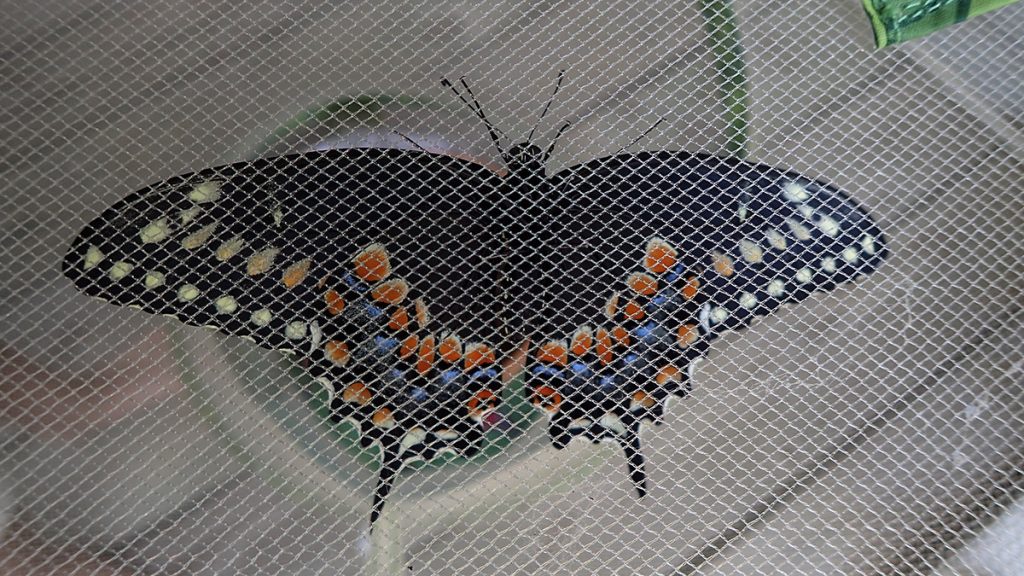
You can see it in the video. When I water the plants, swallowtail butterflies stick out their tongues. And so I see a defense mechanism in action. I also end up seeing predators take out our caterpillars. I don’t love seeing them get killed, but at the same time, I’m getting to see real ecology in action. When you garden for wildlife in your yard, you get the full life and death drama of nature in a compact, easy to see space. And each butterfly species has its own relationships with its host plant, and the other animals it’s surviving with (or from) on that plant.
There are four species I’ve been raising (click to jump to each species):
Black swallowtails, Giant swallowtails, Long-tailed skippers, and Monarchs. NEW- August 23, 2022- I’ve added a new post on raising gulf fritillaries.
Black Swallowtail (Papilio polyxenes)
I’ll start with the black swallowtail, which, along with monarchs, have been the most numerous in my yard over the last few years.
Black Swallowtail Larval Food
Black swallowtail caterpillars eat plants in the carrot family (Apiaceae). This includes many imported food plants we may have in our gardens: fennel, dill, carrot greens, cilantro, and parsley. They’ll also eat Queen Anne’s lace (wild carrot) and rue, an herb grown for medicinal purposes.
Like most of the caterpillars we’re covering here, they eat foods we grow for ourselves. So those of us who want to grow these foods and raise caterpillars have to have a plan. Lilly Anderson-Messec, from Native Nurseries in Tallahassee, recommends separate plots– one for you, one for them. There are also native Apiaceae available at nurseries, like golden Alexander or meadow parsnip. Herbwilliam is another that grows as a weed in ditches and by water bodies.
Black Swallowtail Eggs
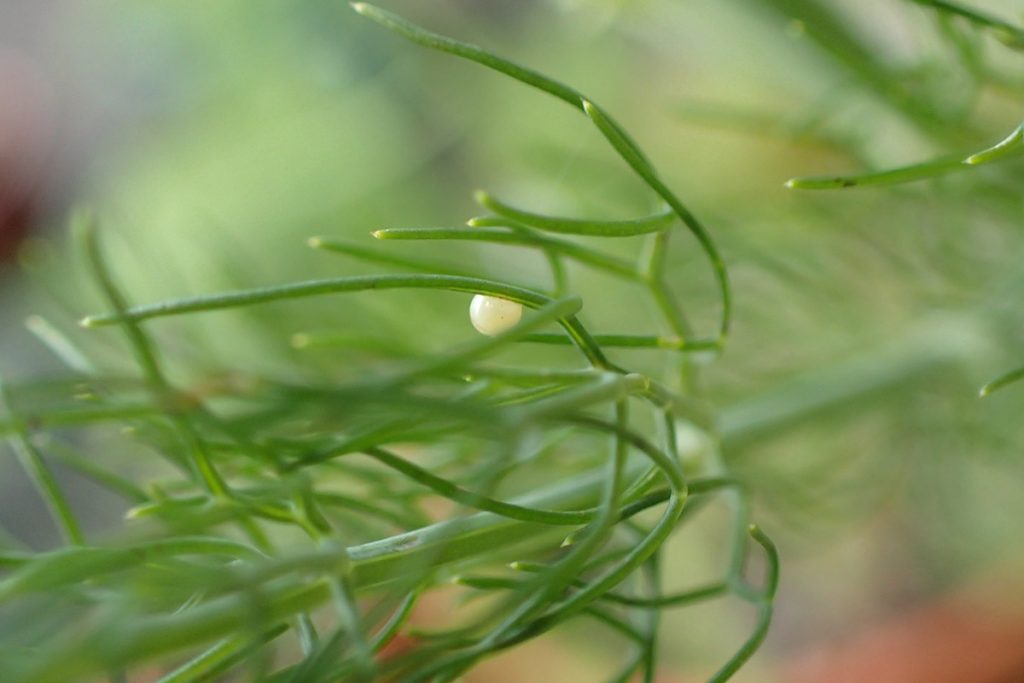
Once spring starts, I pay close attention when watering plants. I’ve seen monarchs laying eggs a few times, but the closest I’ve come with swallowtails is seeing one leave the plant when I open the back door. Their eggs are spherical, translucent, and white at first, and they become milky looking as they get closer to hatching.
Black Swallowtail Early Instars
Every caterpillar species has several growth phases called instars. As they grow, they molt their skins and emerge looking a little bit different. Black swallowtails are fun because they change so much from phase to phase.
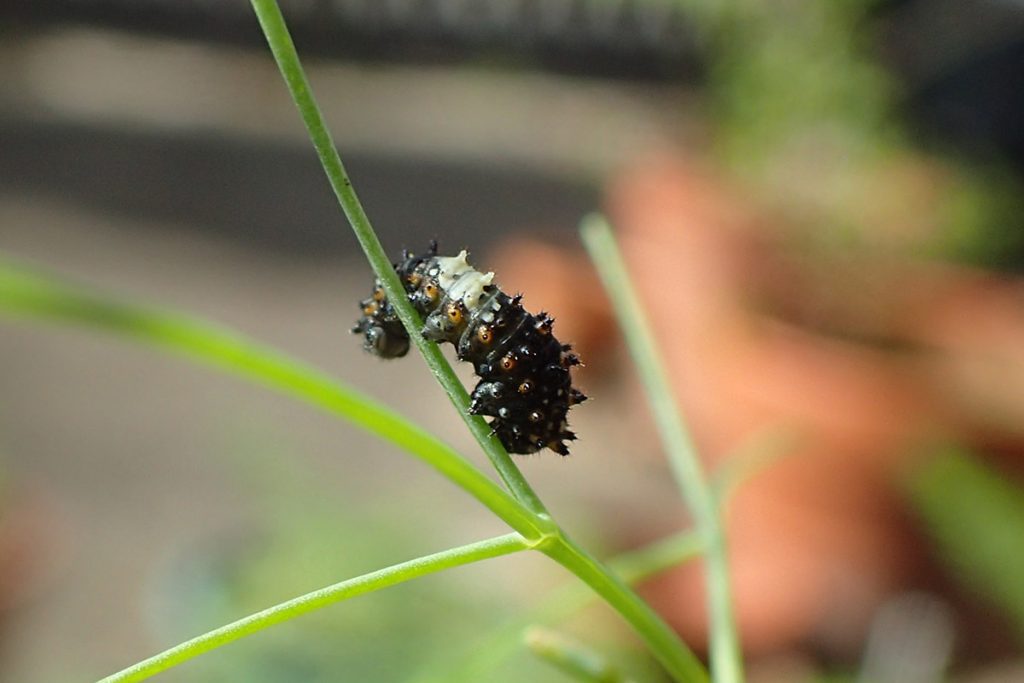
Above is the first instar of the black swallowtail. They look like little animal poops, which is not a bad predator deterrent when you’re a tiny defenseless critter.
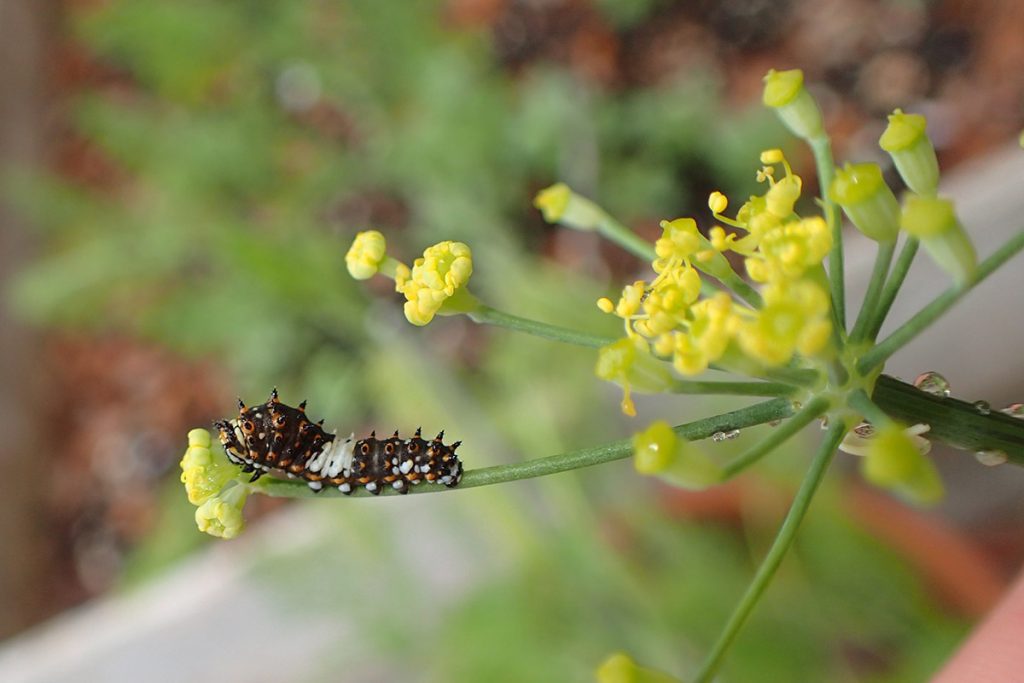
The orange starts coming out in the second instar. Much like second instar monarchs, I’ve noticed these guys like to spend time in the flowers of the plant.
Black Swallowtail Later Instars
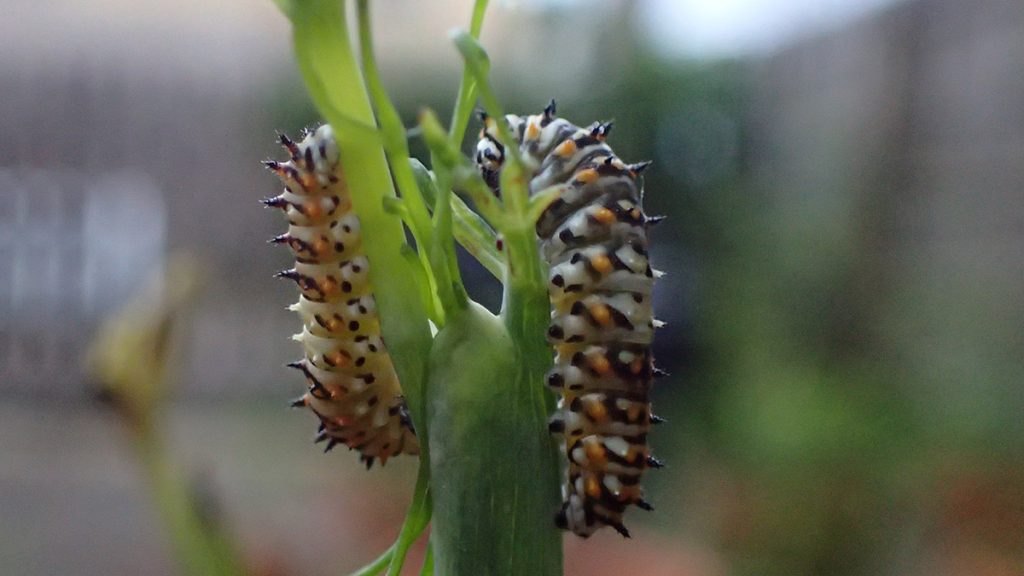
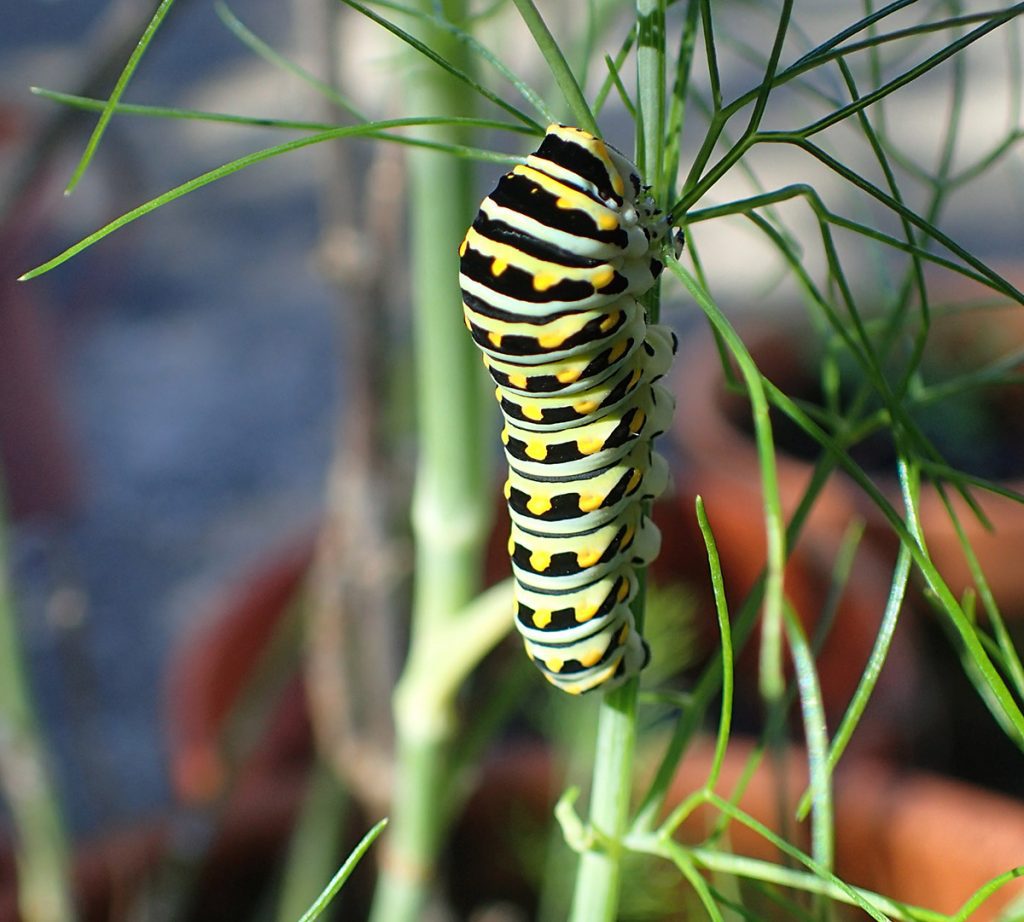
As they get bigger, they lose the poop appearance altogether. Above is my favorite stage- the black swallowtail at its most colorful. Next, they lose the spines and look like an orange-spotted monarch. Like any caterpillar, they can consume quite a bit when they reach their final instar stages.
Black Swallowtail Metamorphosis
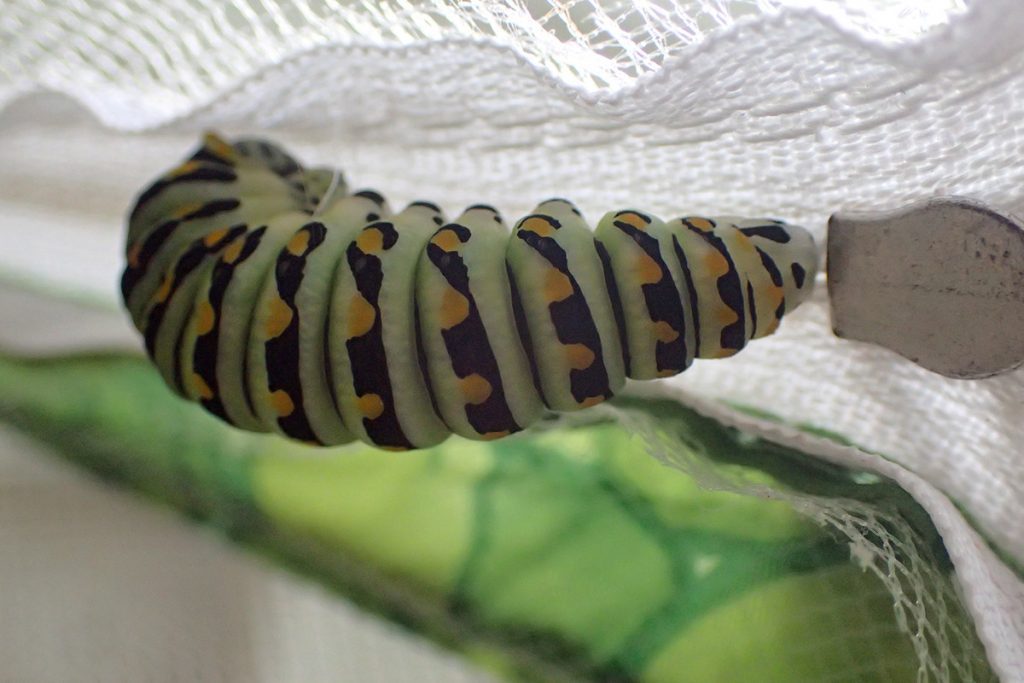
If you don’t move your black swallowtail caterpillars into an enclosure, you may never see them make their change. They’re known to travel far, leaving the host plant to find an inconspicuous place to make their chrysalis. In an enclosure, you can see them move into position and start to attach themselves to the top by spitting out fine threads of silk. I enjoyed keeping them where we could see them, and protect them. I will note that when I’ve gathered a few, they have become aggressive towards each other. We left the shot out of the video, but we had a caterpillar start attacking a “J” and pop it open, murdering one of its siblings.
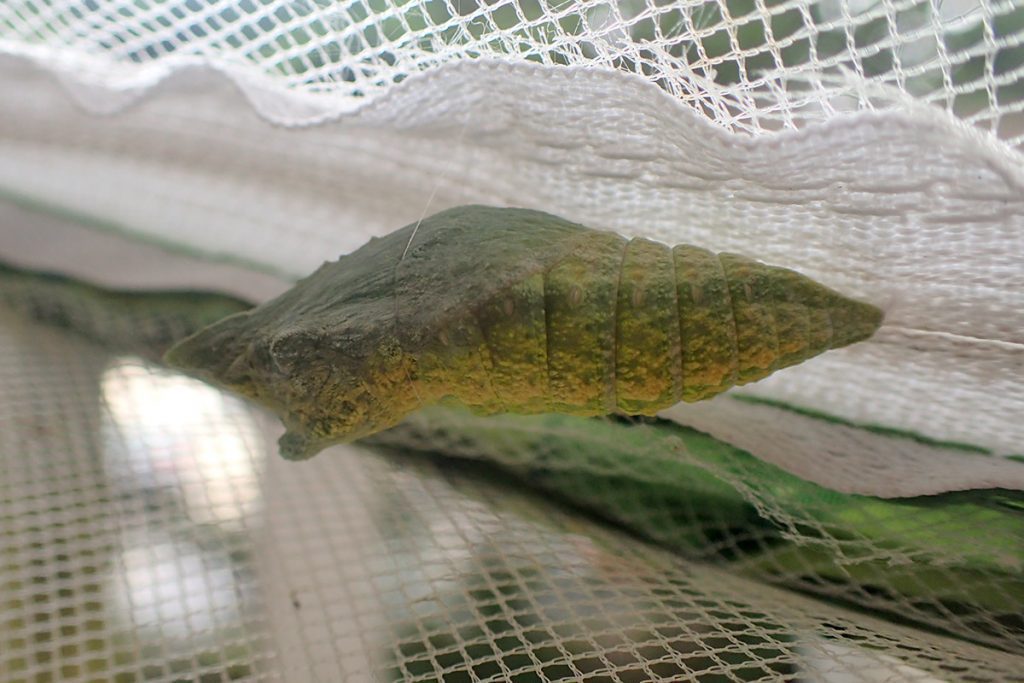
I’ll also note that, unlike monarchs, who usually spin chrysalides and eclose from them in the morning, black swallowtails don’t seem to keep a schedule. If you have a few that make their Js together, you may notice one as a chrysalis, and decide to keep an eye on the rest to see if you can catch that moment. That’s what I did for the video above. But even that can take a few hours.
Black swallowtails overwintering
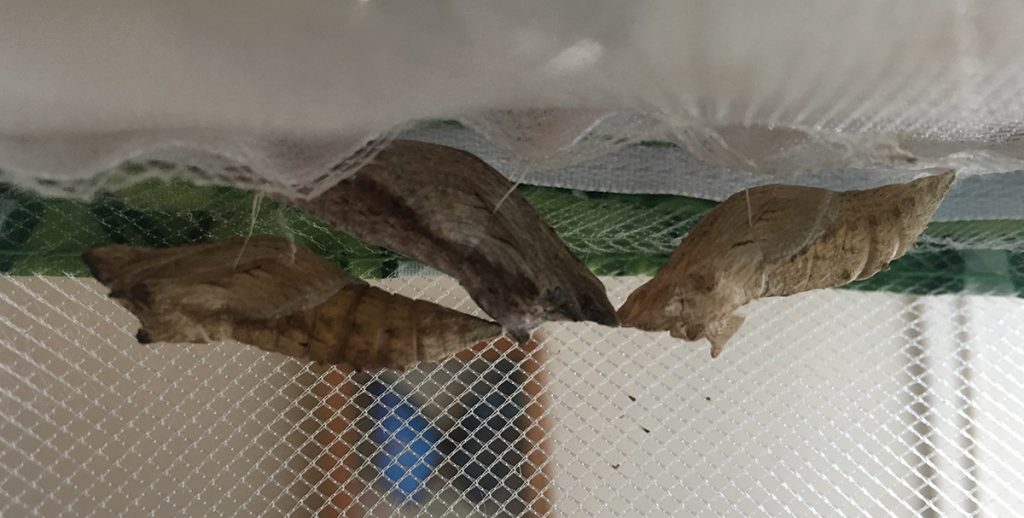
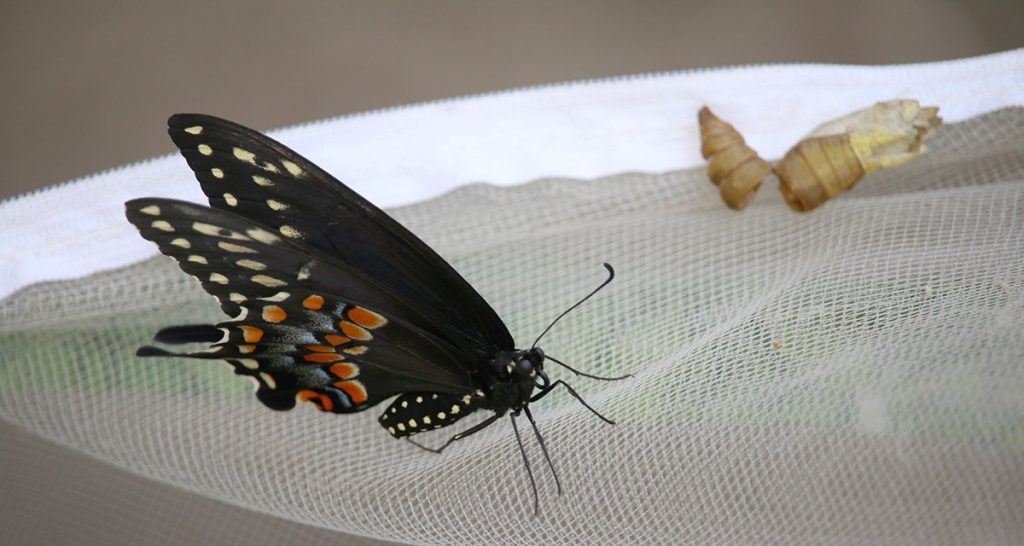
If you have swallowtails spin chrysalides in late fall, they may end up overwintering. Most butterfly species don’t survive as adults during colder months. Instead, the butterflies you see in the spring spend winter as eggs or chrysalides. This is how insects have evolved to survive the colder months of the year.
If you are considering bringing them in to overwinter in your home, think about how warm you keep it. If you like to blast the heat, you might trigger the chrysalis into hatching when it might not be suitable for adult butterflies outside. Part of the fun of swallowtails is that you may have a butterfly within days, weeks, or months. One spring day, I’ll enter the kitchen after coming home from work, and notice a butterfly. Like any butterfly after eclosing, their wings need time to dry and straighten out. When they’re nice and flat like in the photo above, they’re ready to go out into the world.
Giant Swallowtail (Papilio cresphontes)
There’s a second species of the Papilio genus we host in our yard: the giant swallowtail. This is one of my favorites, probably because we get so few of their caterpillars every year. They’re also visually striking, both as caterpillars and butterflies.
Giant Swallowtail Larval Food
If you grow lemons or oranges, you may have noticed a giant bird poop sticking its tongue out at you. Giant swallowtail caterpillars host on citrus plants. I’ve not found them to be much of a pest, even on our short, potted Meyer lemon tree. They don’t tend to be as numerous as other butterfly larvae, and the host plants are much larger than those of other species. If there ends up being too much for comfort on one plant, you can try re-homing them with a friend who might like to see this life cycle in action. Or, you can try a native plant from the citrus family (Rutaceae). They’re not in the same genus as the imported crop plants, and they don’t produce fruit. But they’re what giant swallowtails were eating before Europeans arrived in Florida. Plants like waterash and toothache tree are Florida natives, and will host giant swallowtails.
Giant Swallowtail Eggs
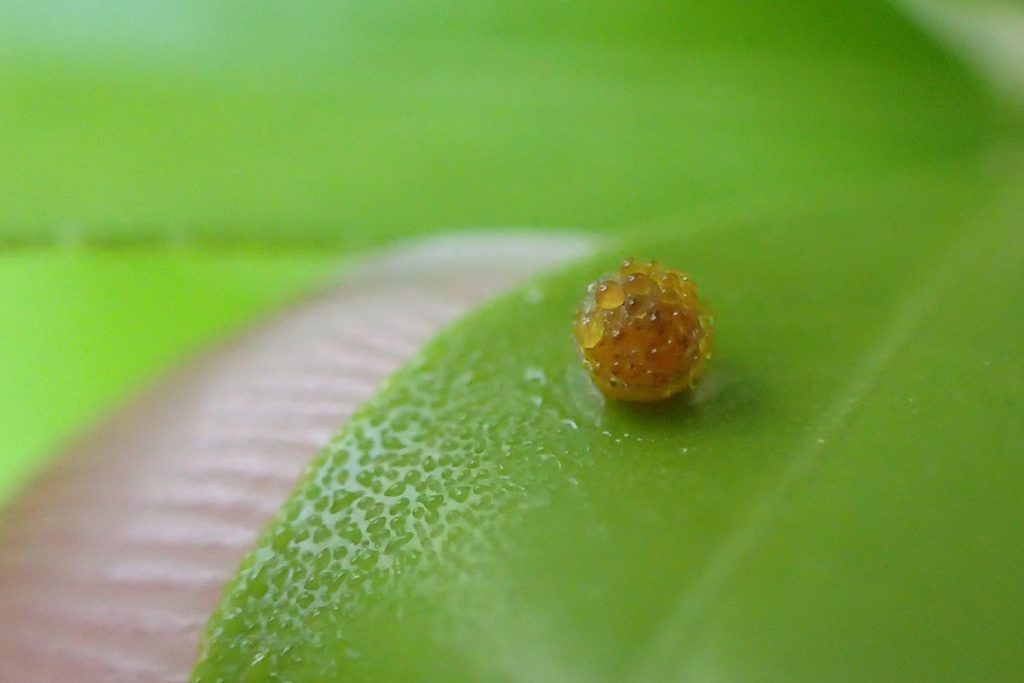
This animal’s appearance is all about staying inconspicuous up until it emerges from its chrysalis as a big, showy butterfly. You can see my finger in the photo above, which gives us a little scale. Casually walking by this plant, the egg looks like nothing more than a brown bump on a leaf. When spring arrives, check the upper leaves of your citrus tree for eggs.
Giant Swallowtail Early Instars
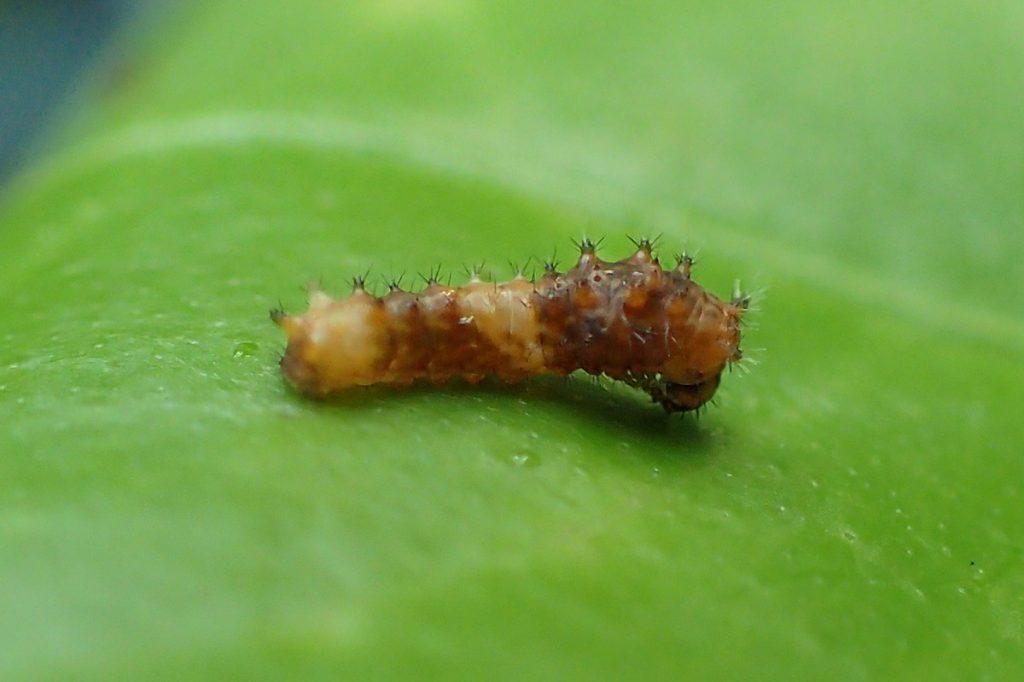
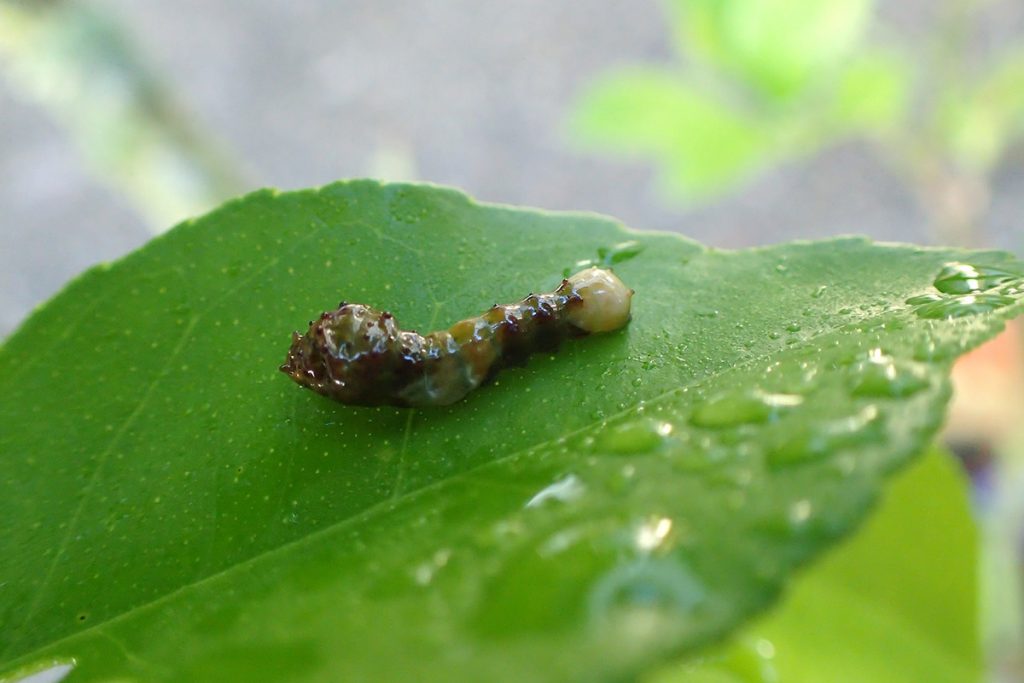
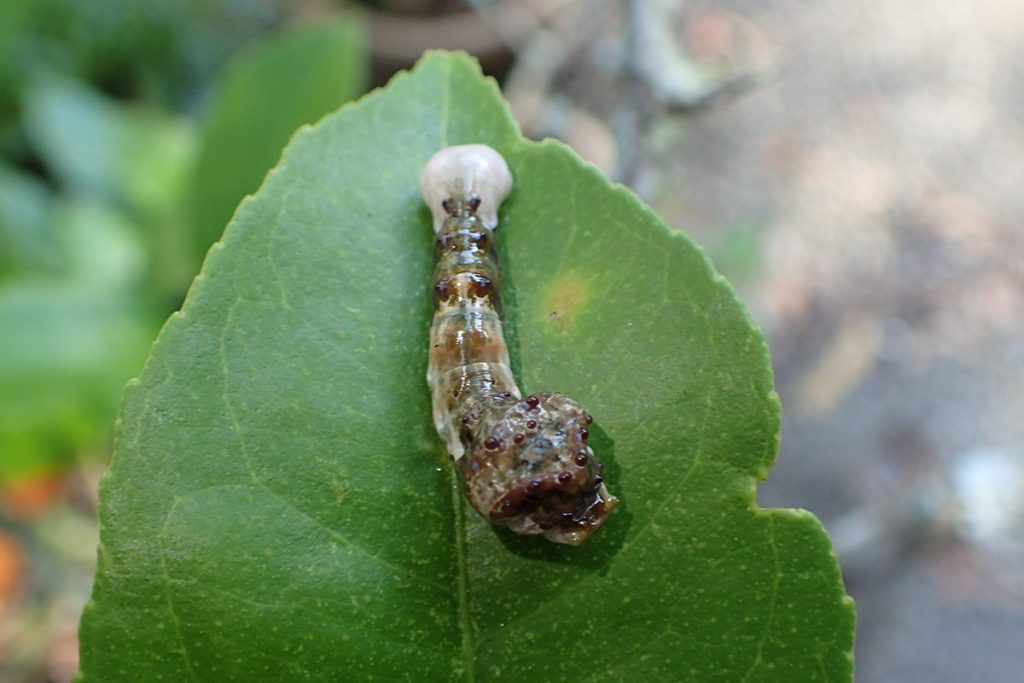
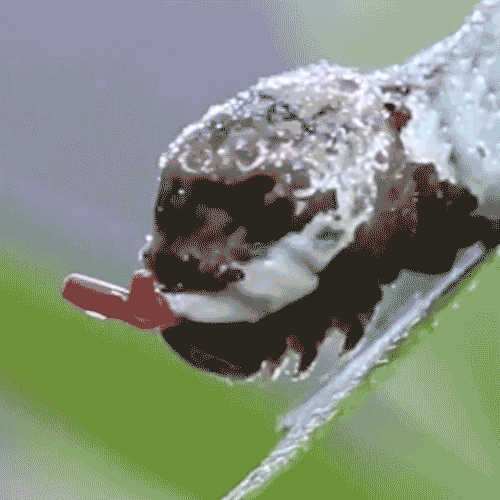
At this early stage, you can see the family resemblance between this and the black swallowtail. They’re little walking poops. Unlike their cousin, as they get a little bigger, they start to look more like poop. They get glossy, and develop a color pattern of grey, brown, and white that serves two purposes. One is that, it does look like bird droppings. As they move into the later instars, though, that pattern also makes them hard to find on lichen-covered branches. Here you can see the color pattern become stronger, and the head start to take shape. As it grows, its head becomes more intimidating, especially when its snake-like tongue comes out:
As you see in the video, black swallowtails do this as well. The tongue is accompanied by a foul odor which further repels predators. Not only do I love the way they look, but I admire this creature’s many defenses. Anyhow, it’s always fun to see one stick its tongue when I’m watering plants.
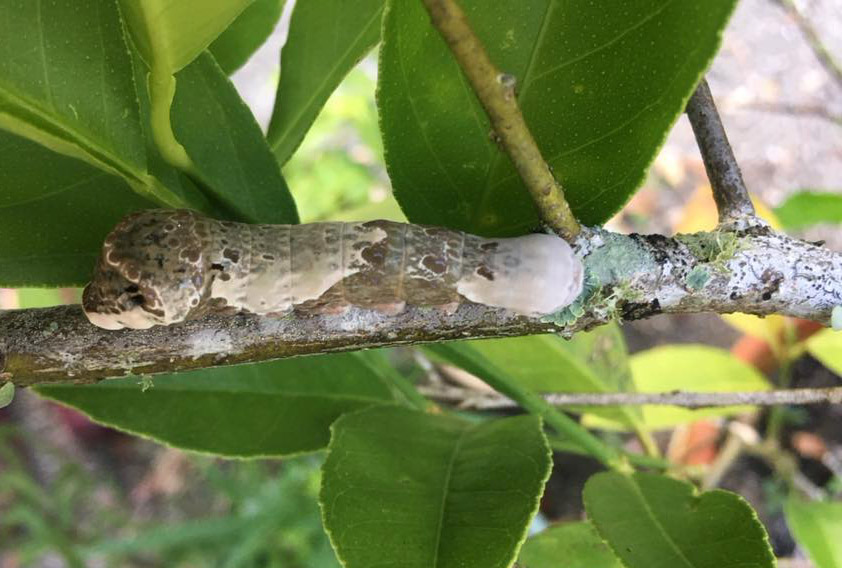
And here, above, a mature giant swallowtail caterpillar blends in nicely with a branch on our lemon tree. I notice these guys are nocturnal feeders, preferring to blend in during daylight hours. I’ll take a flashlight out into the garden at night to watch them eat- when they get big, they really go to town on a leaf.
Giant Swallowtail Chrysalides
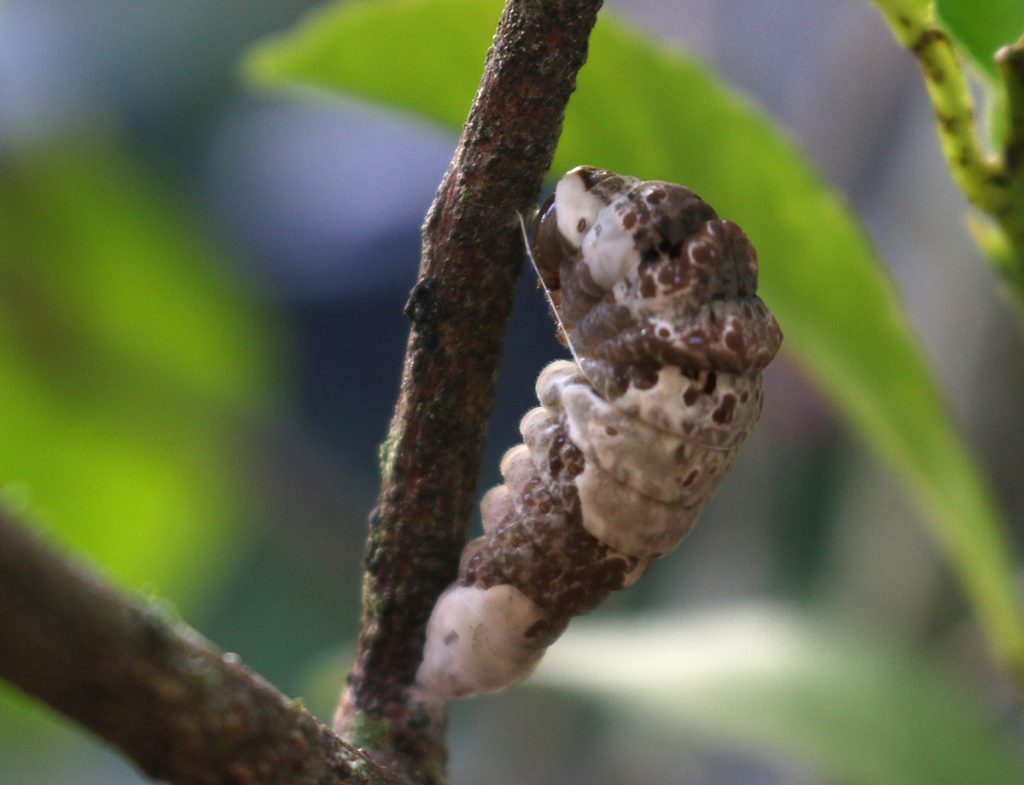
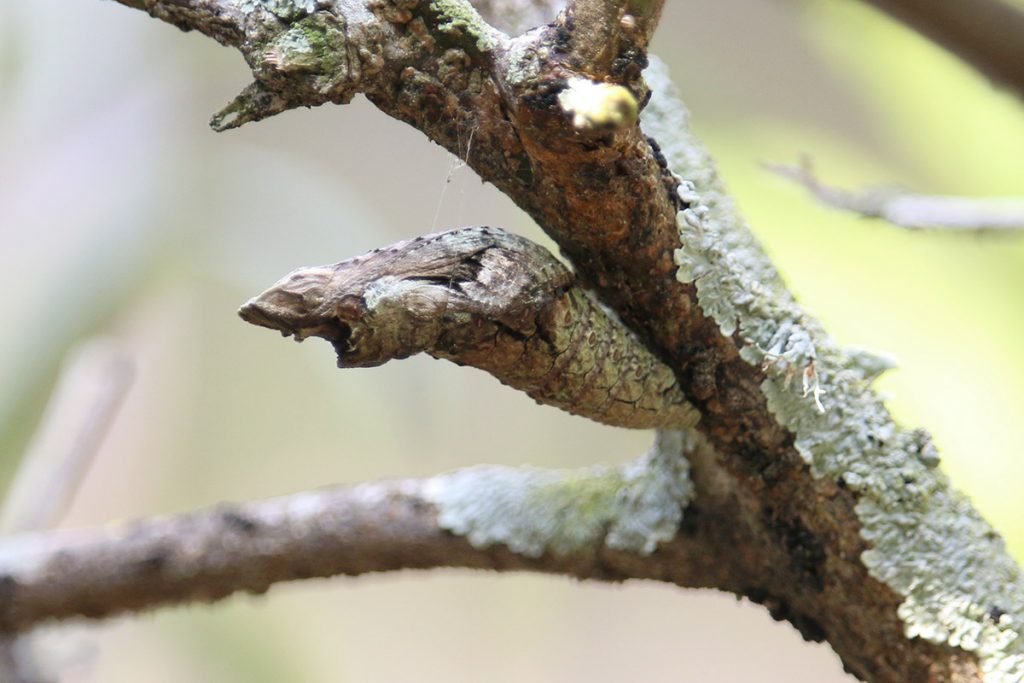
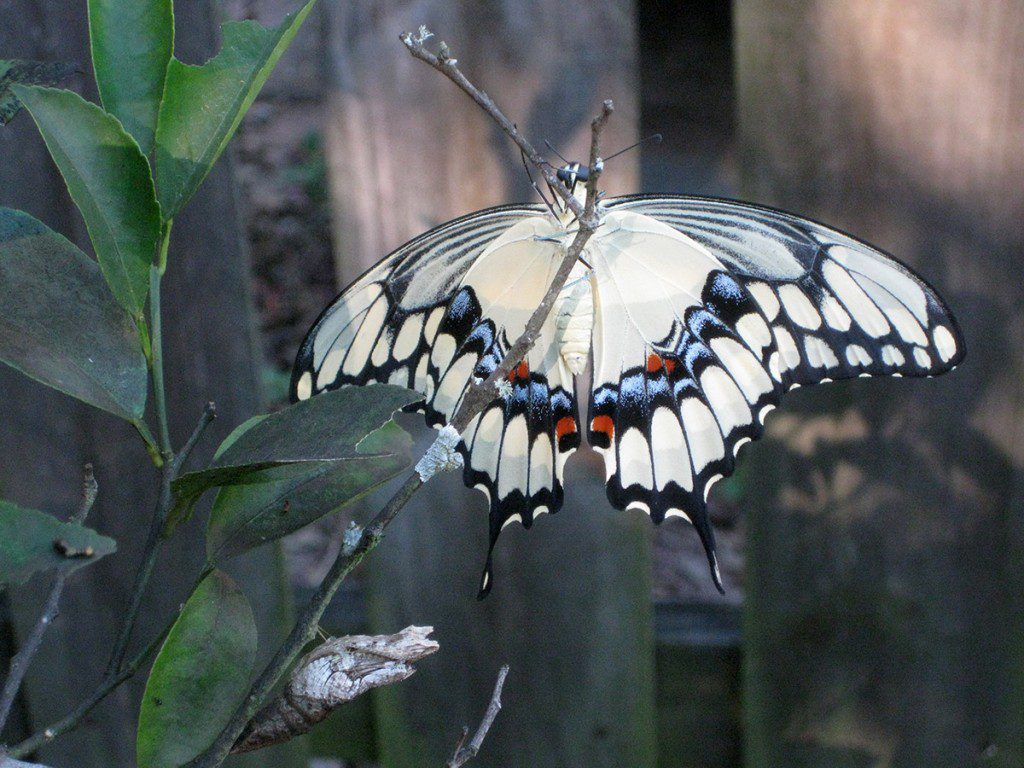
Many times, giant swallowtails pupate right on their host plant. That’s convenient. They’ve also wandered onto the adjacent wooden fence, and I think that color plays a role in where they spin a chrysalis. Anyhow, they don’t travel as far as black swallowtails. Here, you can see how the coloring of the chrysalis matches the tree bark. At every stage of its life so far, this animal has not called attention to itself. But then… Most swallowtail species are black on the tops of their wings, with different patterns of color across them. Giant swallowtails are no exception. However, the undersides of swallowtail species are truly beautiful. Here, my wife Amy found one drying its wings one morning, next to its chrysalis. She and the kids admired it for a little while while it got ready to fly off. If you squint, can see what looks like a bird poop on a leaf with kind of eaten-up edges…
Read More: Feeding caterpillars in your north Florida Garden
- Raising monarch, black swallowtail, giant swallowtail, and longtailed skipper butterflies, with photos of every life stage.
- Raising gulf fritillary caterpillars (passion flower caterpillars), with photos of every life stage.
- Caterpillar supermarkets: a list of the wildflowers and trees/ shrubs that host the most moth and butterfly caterpillar species.
- A lot of insects are out to kill your monarch caterpillars. It’s a sign that your garden is healthy.
Long-tailed Skipper (Urbanus proteus)
I don’t know if many people set out to raise these butterflies. Many people consider them a pest, because they do host on food plants and they can be numerous and hungry. And, like all skippers, they look like moths when they fly. I think moths are cool, but that’s far from a universal opinion. Once they’re busy nectaring on a flower, and they’re still, you can see their long tails and fuzzy blue backs. The adults have been a constant presence in my garden, pollinating a large variety of plants. I like having them around.
Long-tailed Skipper Larval Food
The caterpillar of the long-tailed skipper as known as a bean roller. If you’re planting those bean plants you got at the Library on Be My Neighbor Day, you might find yourself hosting them whether you wanted to or not. Seeing the damage they do can turn people off from bean rollers. I find that I get plenty of beans while letting the plants get torn up a little. But my tolerance is not your tolerance. So what do you do if you want to help butterflies and grow as many beans as you can? You can follow Lilly Anderson-Messec’s advice and plant two plots- one for you, and one for them. Or you can try the native relatives of these cultivated food plants. The hairypod cowpea is a Florida native that also hosts Dorantes long-tailed skippers (an occasional southern visitor we met in 2017) and grey hairstreaks.
Long-tailed Skipper Eggs
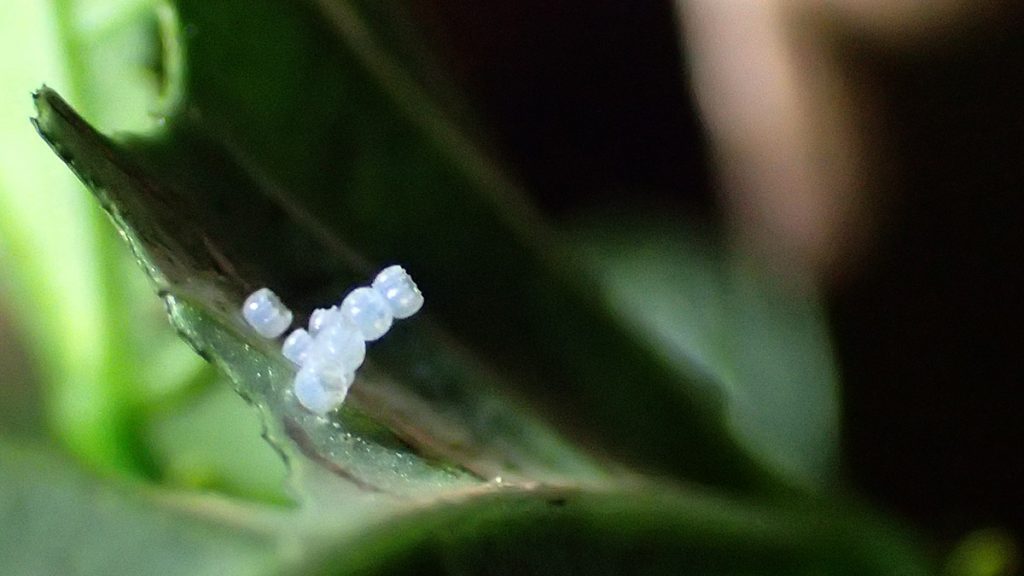
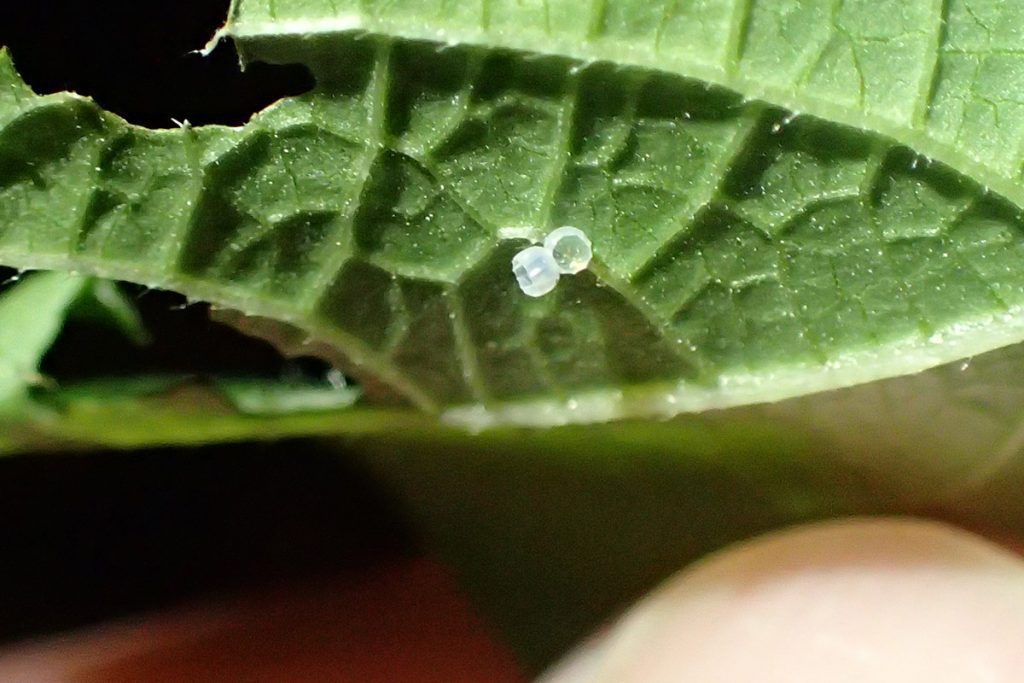
I don’t usually notice long-tailed skipper caterpillars until I see their signature rolled leaves. One night (they’re nocturnal feeders) I did notice a few recently hatched caterpillars on a bean plant and turned over leaves to find the eggs above. Their mothers often lay eggs in clusters like this. These eggs are empty, of course, but you can see their shape. They start white, and then turn yellow as they get close to hatching.
Long-tailed Skipper Instars
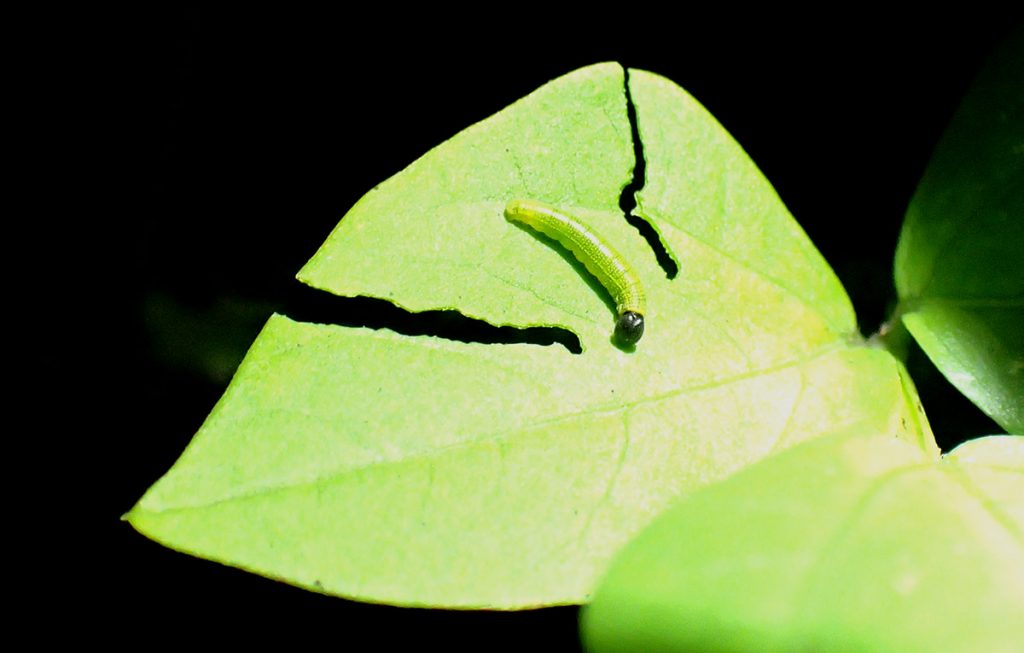
I usually chart the growth of these critters by the size of their leaf curls. I never really see them unless I go out at night with a flashlight. Here you can see an early instar bean roller making two cuts on a leaf. It will soon curl that section of the leaf and use silk to make it stick. This is its shelter during daylight hours.
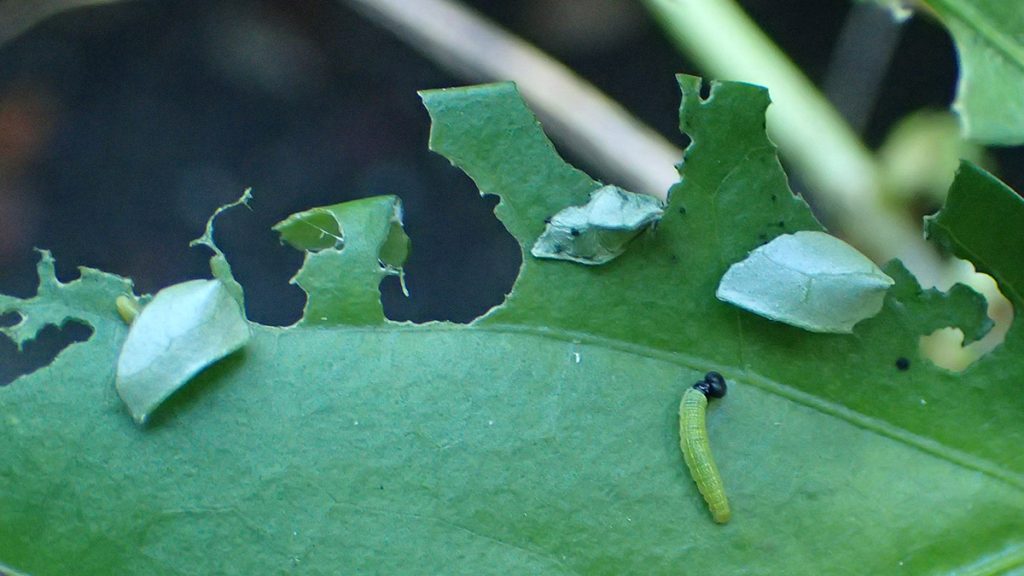
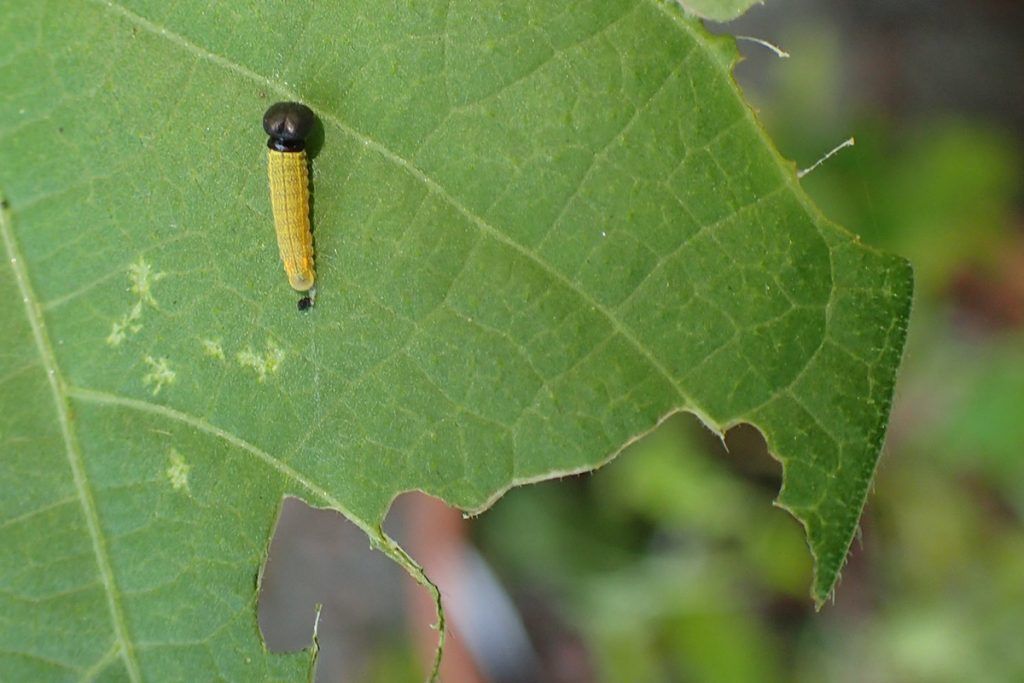
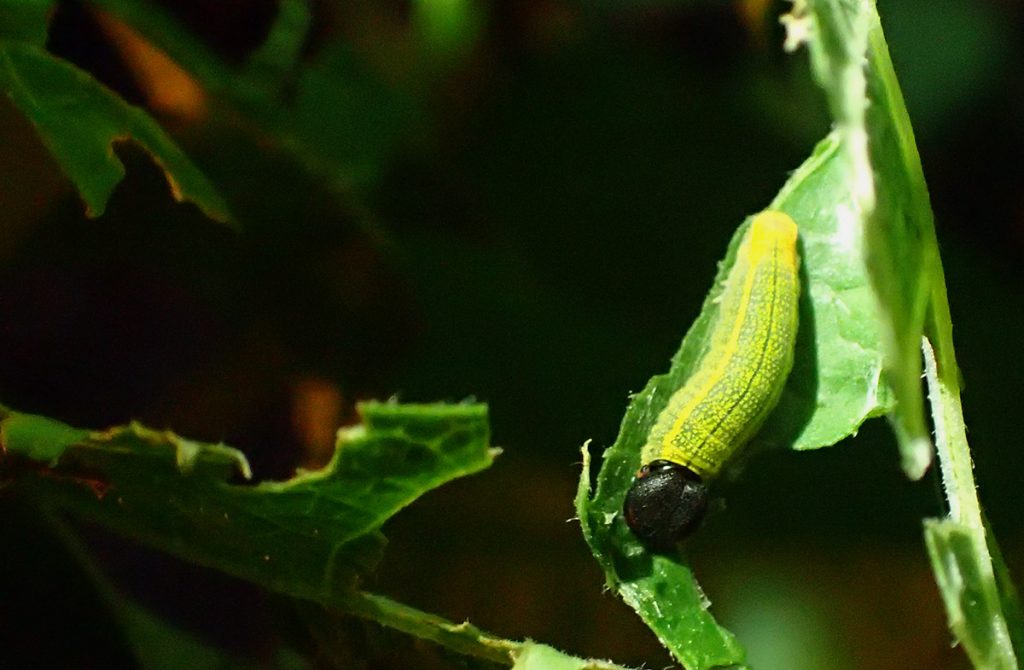
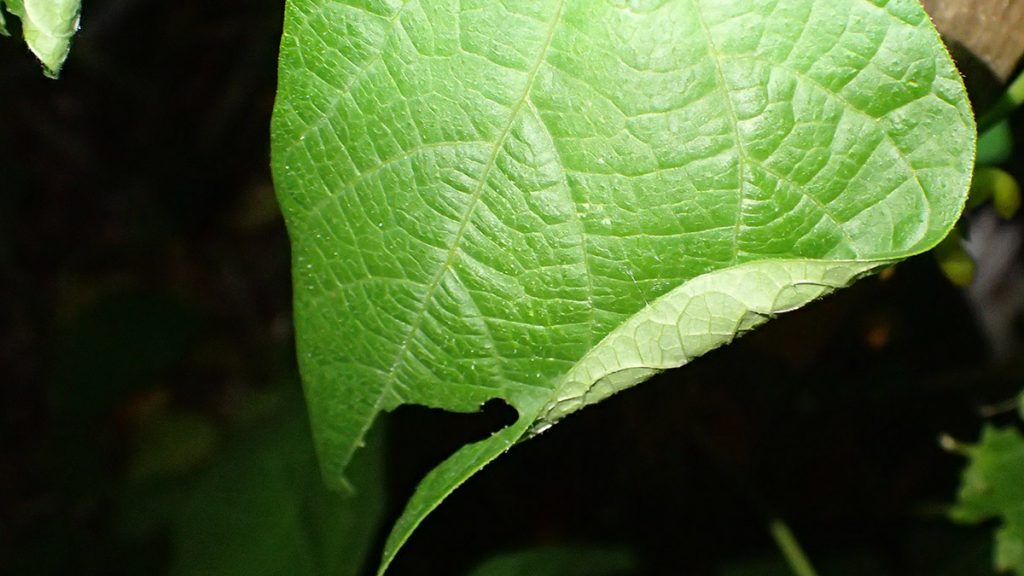
You can see what the early instar leaf curls look like above. As they mature, their heads get bigger and they start to develop vertical yellow stripes. As they get bigger and thicker, their bean curls also become larger sections of leaf. And you can see what they do to leaves. When you see them outside of their leaf curls, they get bigger, thicker, and their yellow lines are more pronounced. You’ll also notice the caterpillar below is getting a redder head.
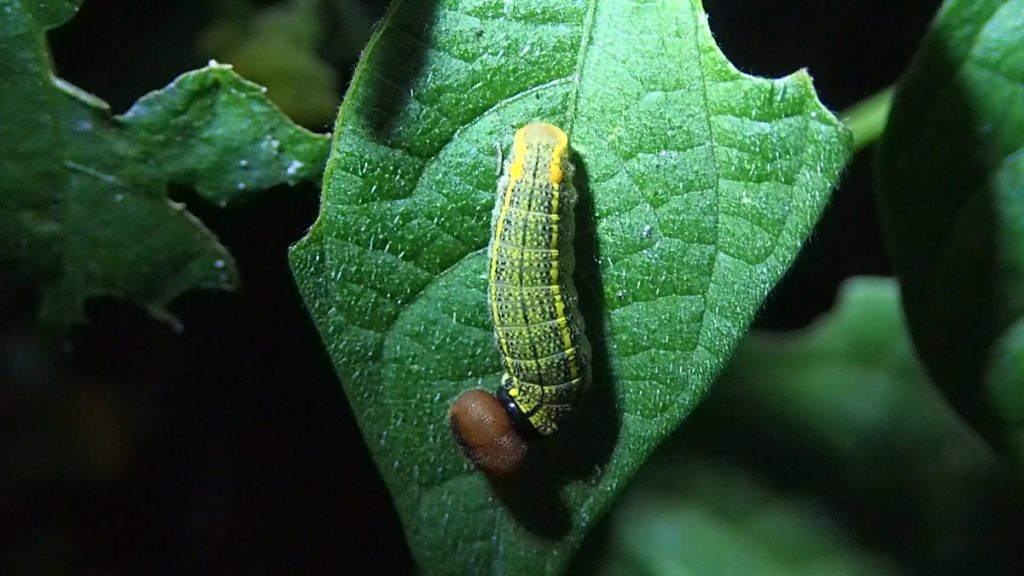
Long-tailed Skipper Chrysalis
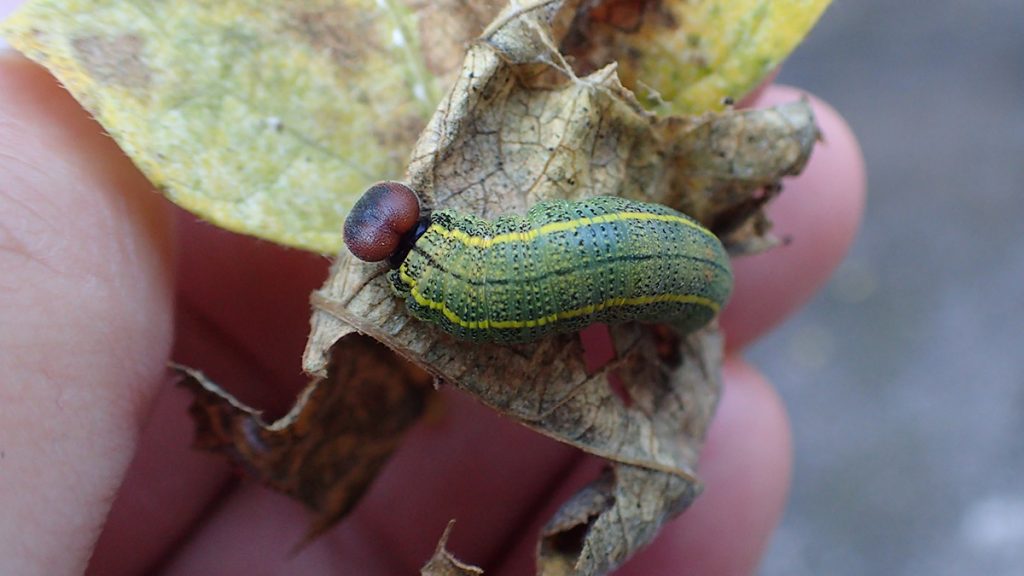
The red head is an indicator that the caterpillar is getting ready to make a chrysalis. I’ve not ever seen its chrysalis in the garden. I’ve read that they attach themselves to the underside of a leaf and the resulting chrysalis is brown and covered in white powder. In other words, another poop disguise. I’ve also read that they may make a nest of leaves next to their plant in which to chrysalize, which is what I caught the one above doing. Below is its nest. Since I’ve never seen their chrysalides, I think the families that have hosted in my yard prefer to hide in nests. And so I now know to let dead leaves lie around our bean plants.
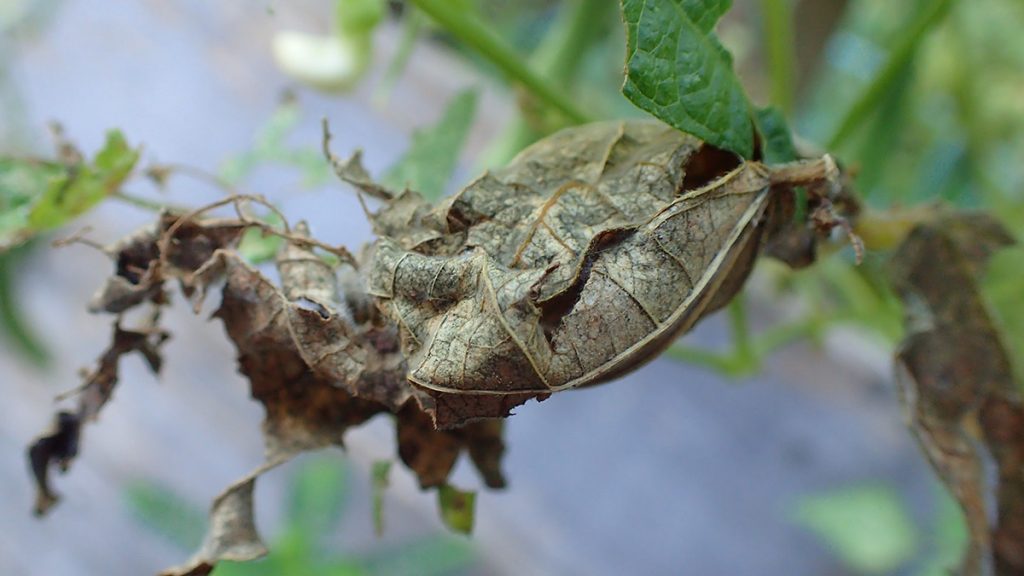
Once they hatch, they’ll be one of the more common butterflies in your yard. it seemed like we had fewer than usual butterflies in the yard in 2018. But we still had a pair of long-tailed skippers flittering about the yard pretty regularly.
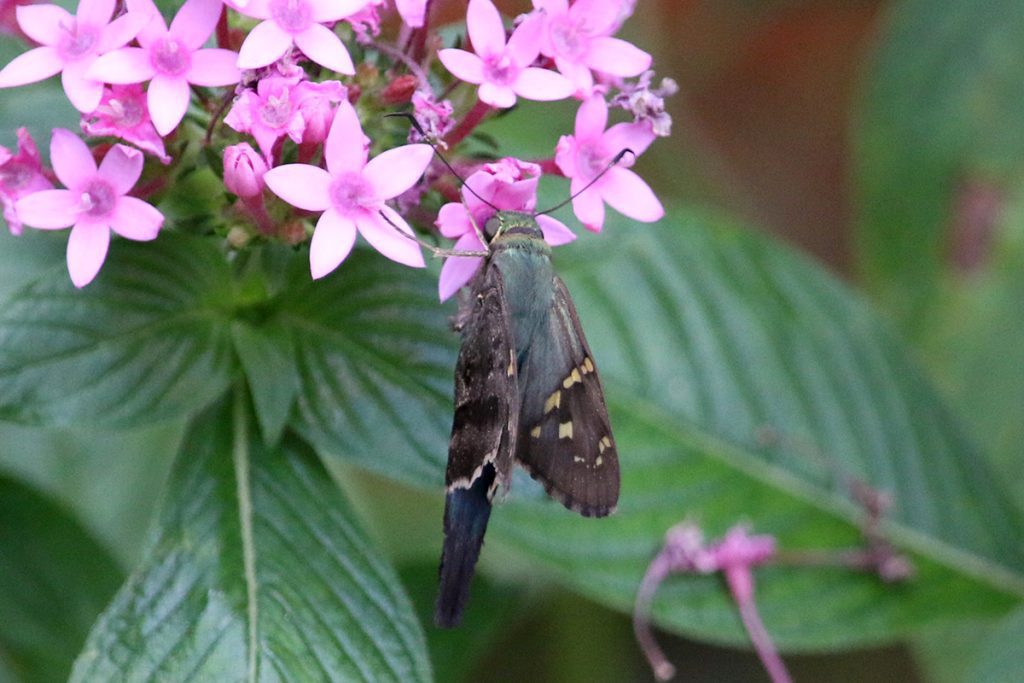
Monarch (Danaus plexippus)
This is the butterfly I’ve written about the most. In fact, I have a whole post, and video, about raising monarchs. And I have another dedicated to the many animals that may eat them, and another on monarch tagging. It’s a critter that gets a lot of attention. And why not? On the one hand, they have an amazing life story, making a multi-generational migration every year. A journey started by one butterfly in Mexico ends months later with its great-great grandchild in the northern US. On the other hand, it’s a species in serious trouble. Habitat loss, climate change, and parasitic diseases on nonnative milkweed- it’s a tough life for a monarch. And so they’re worth a little extra attention. I’ll provide a brief recap of their life cycle here, or you can read the previous posts.
Monarch Caterpillar Larval Food
Monarch caterpillars eat plants in the Asclepias genus- milkweeds. There are many species to choose from, and many more natives available here in Tallahassee than just a couple of years ago (This was written in 2019. Natives are much more available than tropical milkweed in 2024).
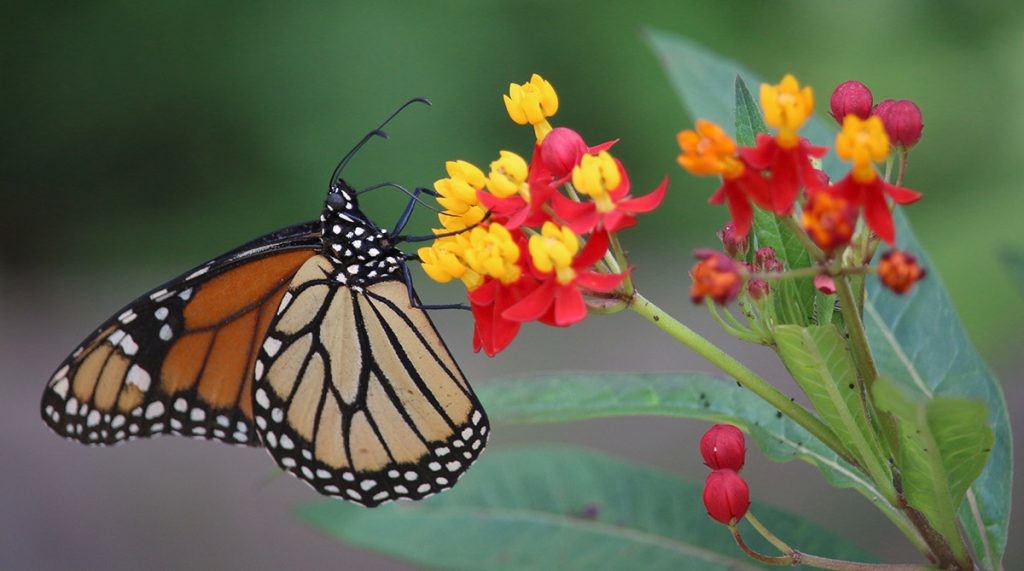
One of the biggest controversies in the monarch raising communities over the last few years is the use of tropical milkweed- Asclepias currassavica. This is because it blooms longer than native species, and if there’s not a hard freeze, it might well bloom through winter. When milkweed flowers stay on a plant for so long, they’re more likely to develop a protozoan called Ophryocystis elektroscirrha, or OE. Adults will nectar on flowers, contract OE, and pass it along to their caterpillars. Those caterpillars will go through their instar stages, and make chrysalides from which they’ll never emerge, or emerge deformed. If you have tropical milkweed, you can prevent OE by trimming the plant to six inches after Thanksgiving and keeping it at that height until spring. Another threat is milkweed bought at big box stores that have been treated with pesticides. In fact, a lot of flowers at big box stores have been treated to keep away the insects that would eat them. But we buy milkweed to be eaten.
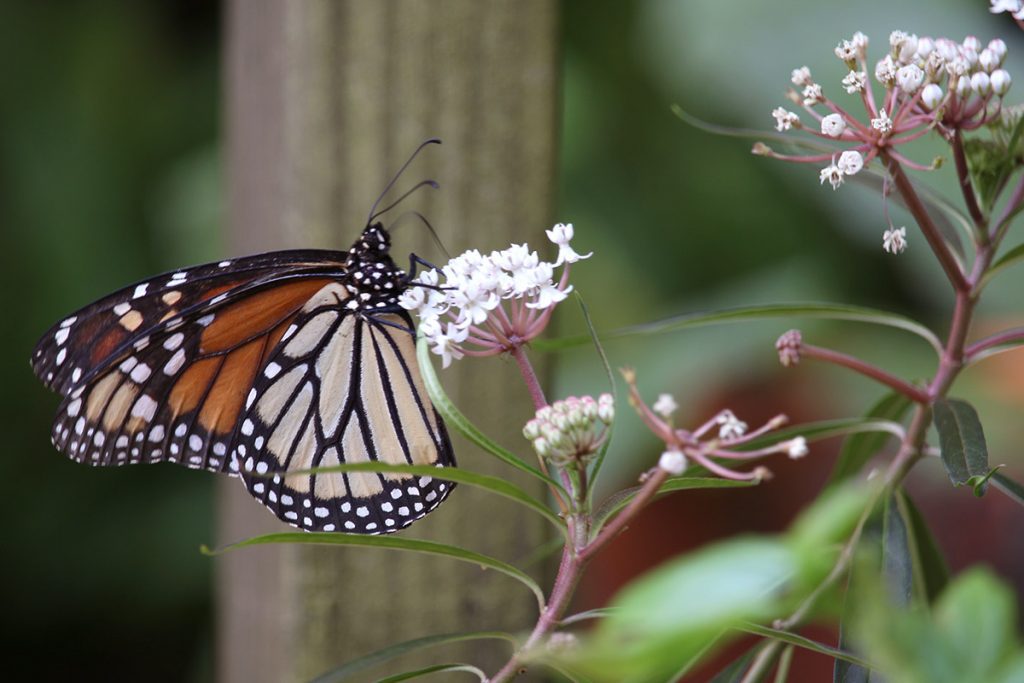
There are many varieties of native milkweed available locally. The most common is butterflyweed, Asclepias tuberosa. This is the milkweed plant most grown from seed. I’ve seen more and more species in stores in recent years, but the next most common natives are white (Asclepias perennis) and pink (Asclepias incarnata) swamp milkweed. The cool thing about milkweed is that it is a weed. First, your plants have to go to seed. Milkweed plants develop seed pods:
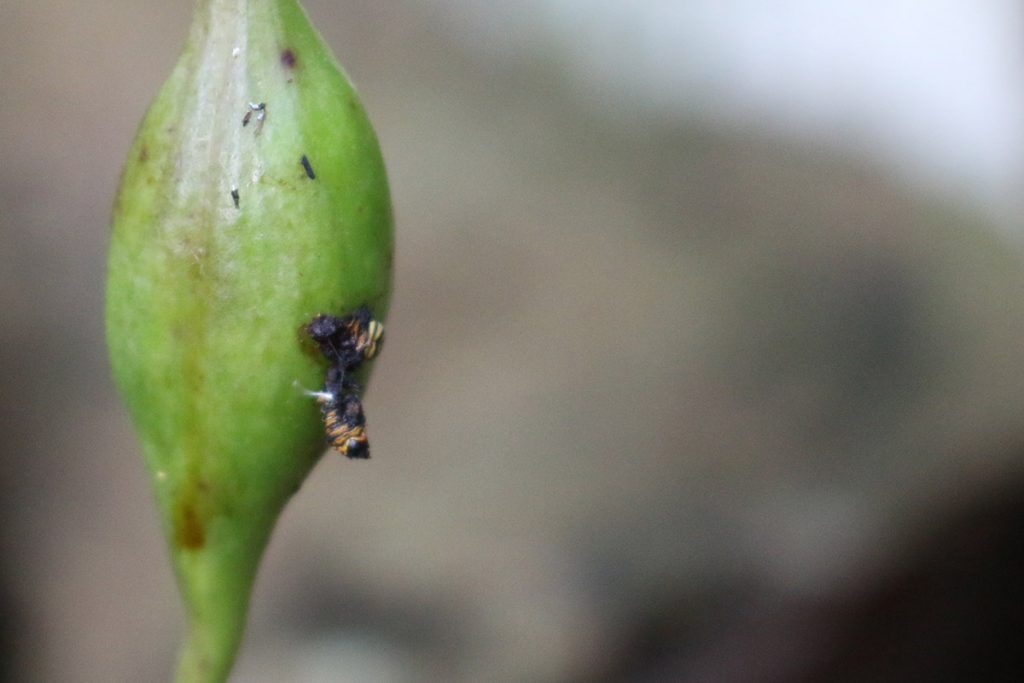
After the pod breaks open, little white fuzzies disperse through your yard. I like to leave them where they grow, but do occasionally transplant them:
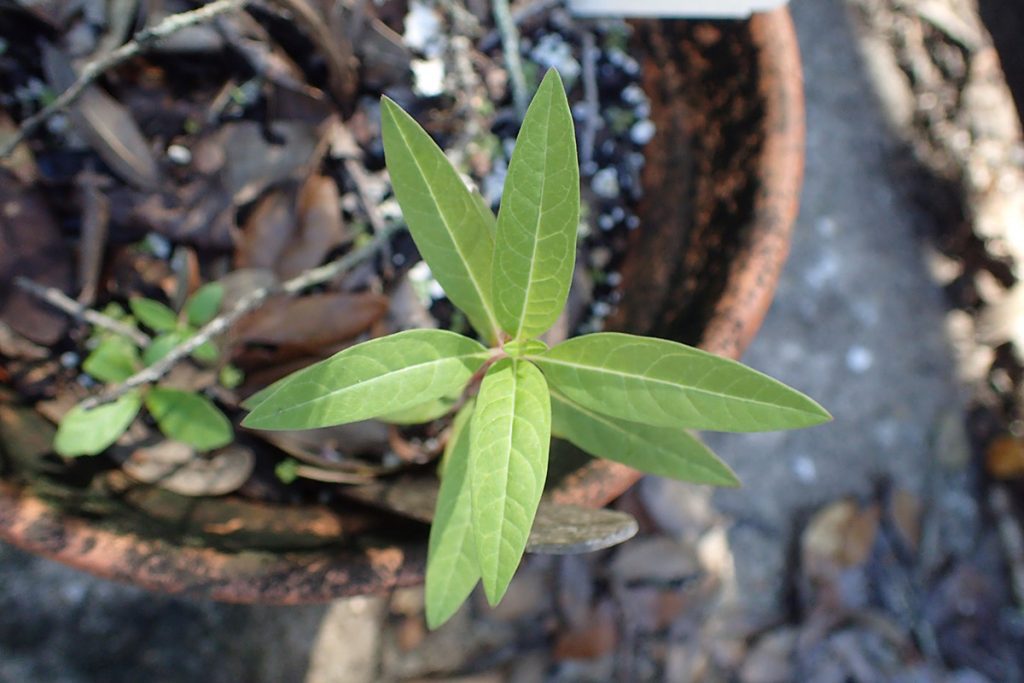
Monarch Caterpillar Eggs
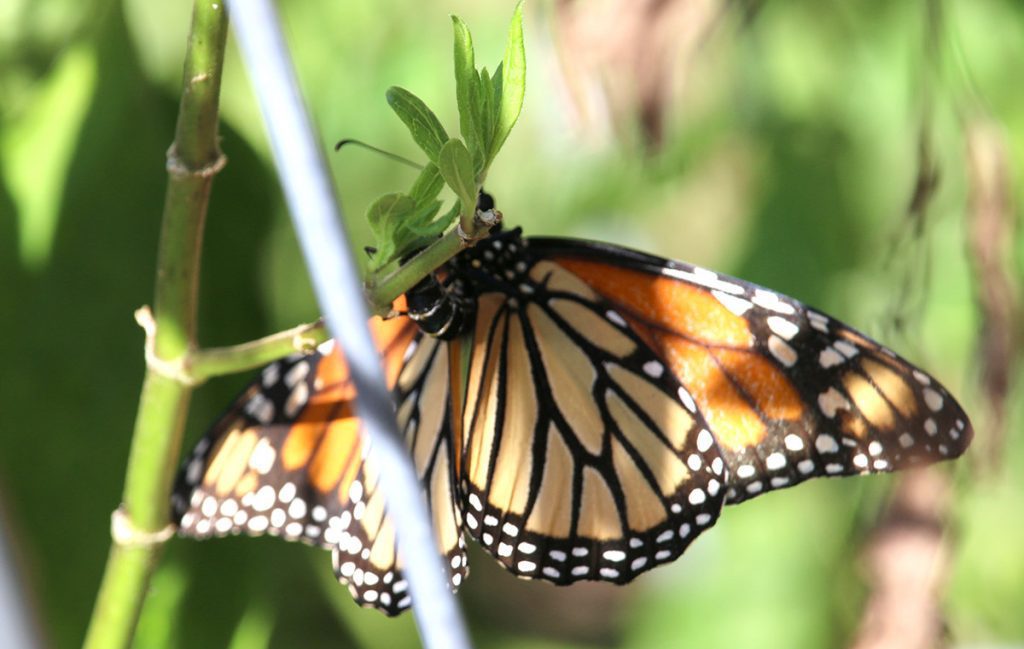
This is the one species of butterfly I’ve caught in the act of laying an egg. I’ve seen black swallowtails leaving the fennel plant from out the window, and gone out to see freshly laid eggs. But, perhaps because I have so many more milkweed plants than larval food for other butterflies, I see mothers take their time spreading out eggs on our plants.
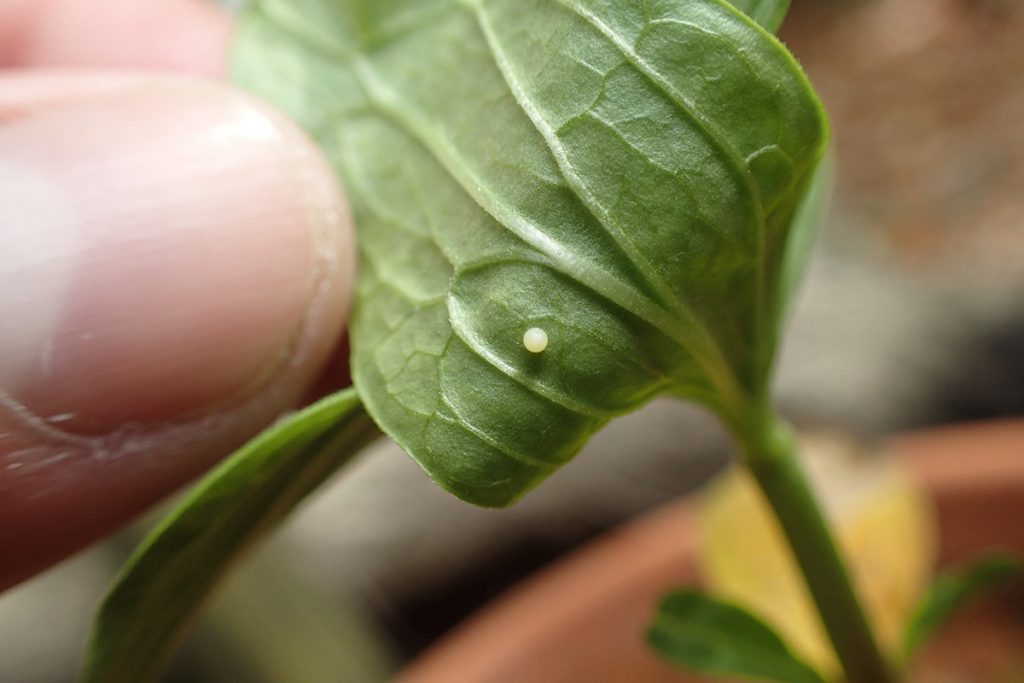
Most of the time, the mother lays the eggs on the underside of the leaf. They’re well hidden there. I also see them on flowers from time to time, or on the top of the leaf:
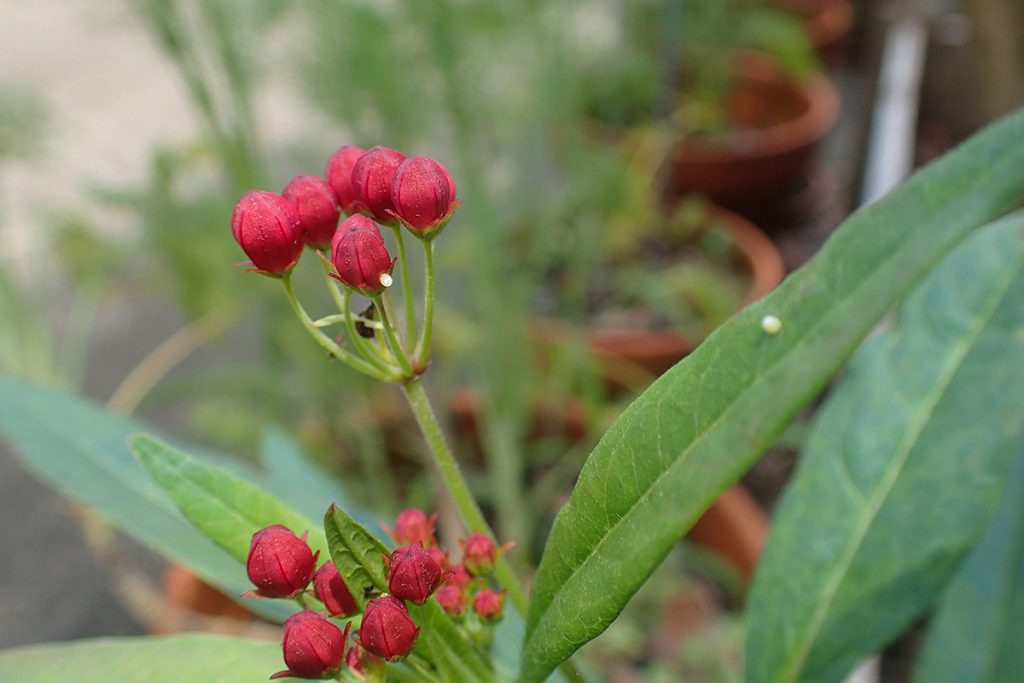
Earlier in the season, monarchs will sometimes lay an individual egg on several different plants. This gives each caterpillar plenty of food. As the season drags on, however, some of the plants get crowded, and I find myself trying to even each plant’s load by shuffling caterpillars. Sometimes, they do this themselves.
Monarch Caterpillar Instars
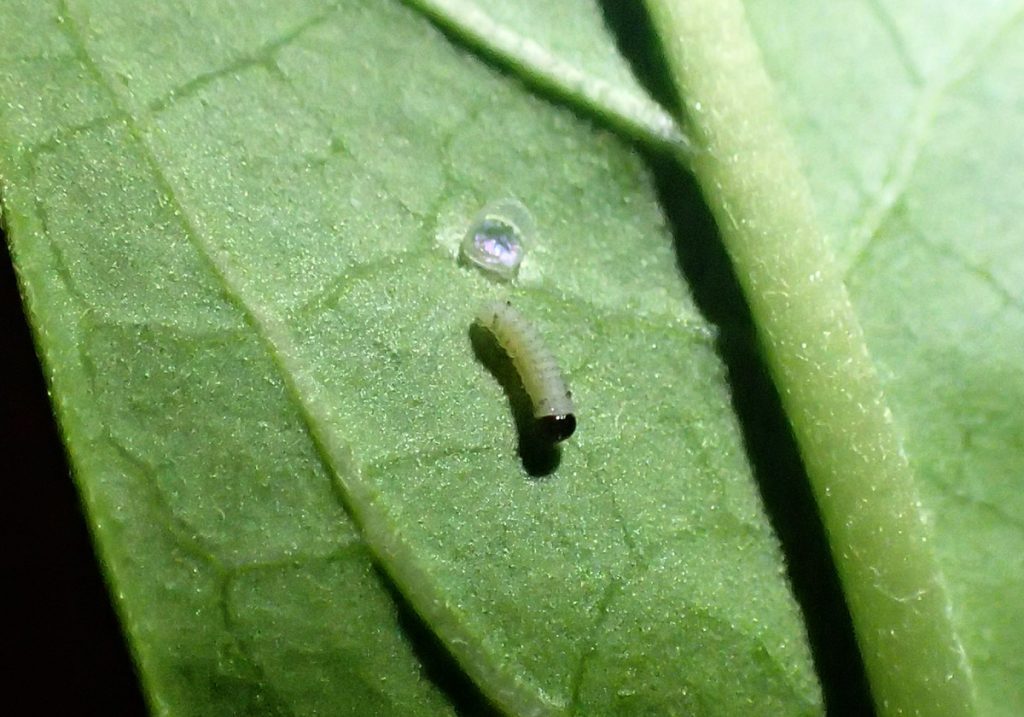
Above, you can see a newly hatched monarch caterpillar. I often only find out we have a new brood when I see a small, circular holes on milkweed leaves.
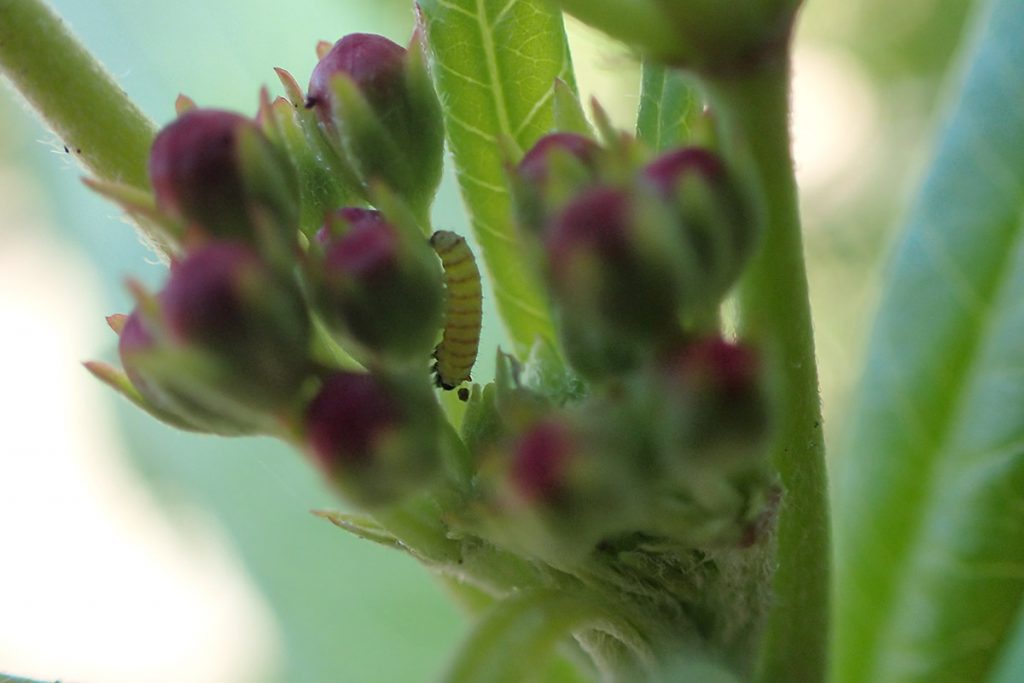
They often head to the flowers of the plant, where they can more easily hide from predators.
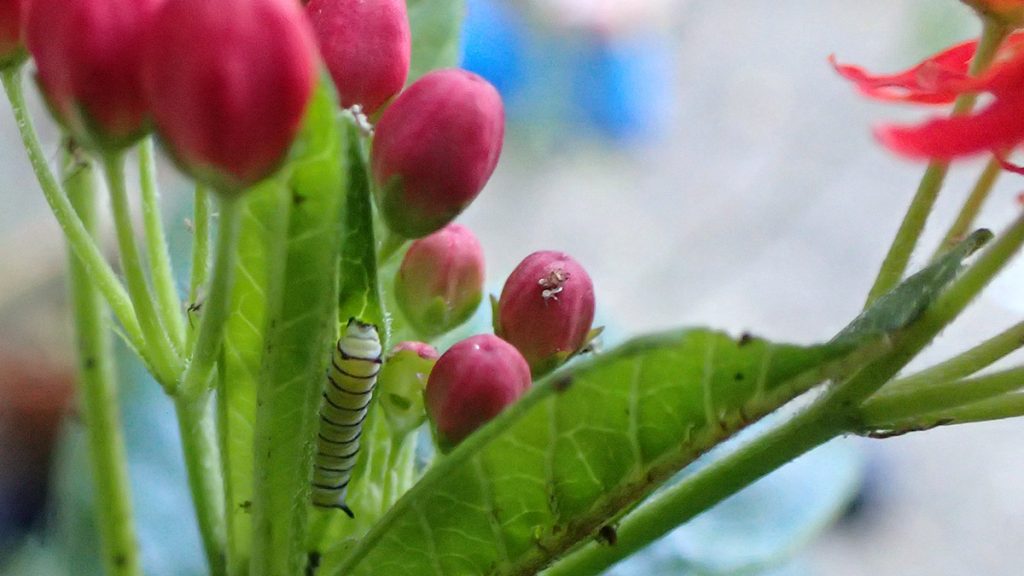
Second instar monarchs start to get stronger stripes and small tentacles (I know, I used to think they were antennae, too).
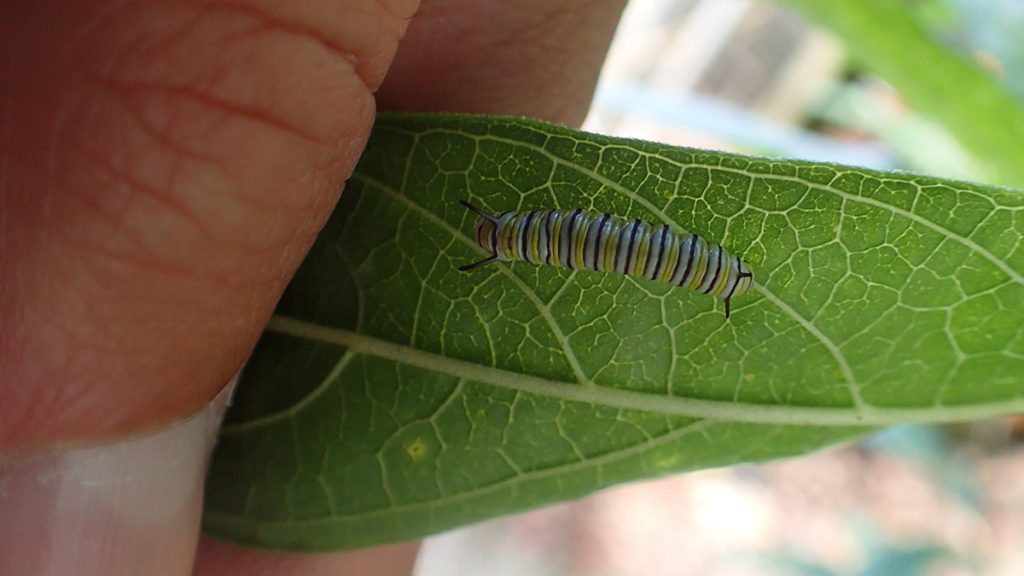
Do you notice the familiar monarch stripe pattern starting to take shape in this third instar caterpillar? The front tentacles are longer, and the rear ones are starting to pop out now as well.
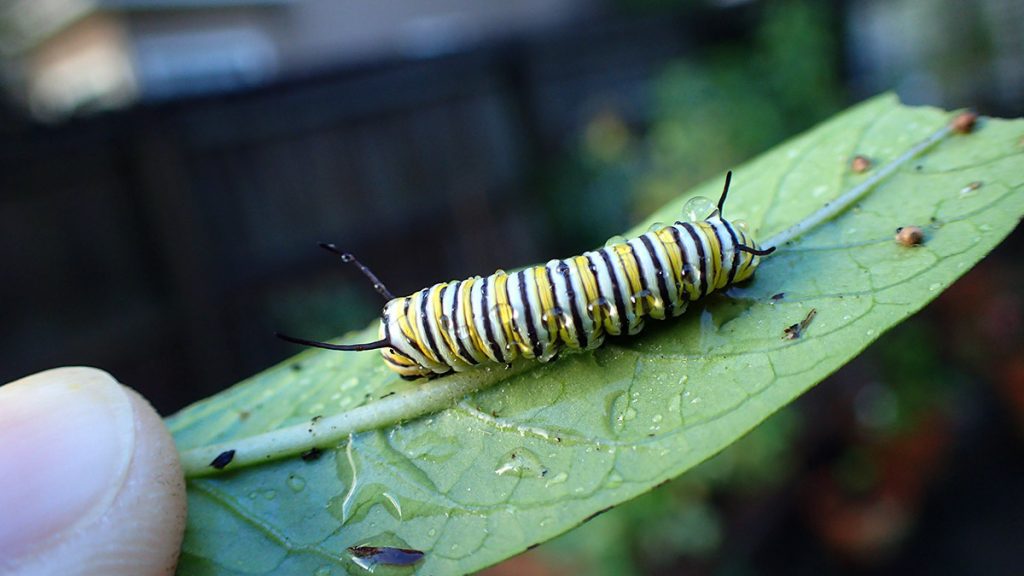
It’s a subtler change between third and fourth instar. Note the longer tentacles, and the deeper grooves between the stripes.
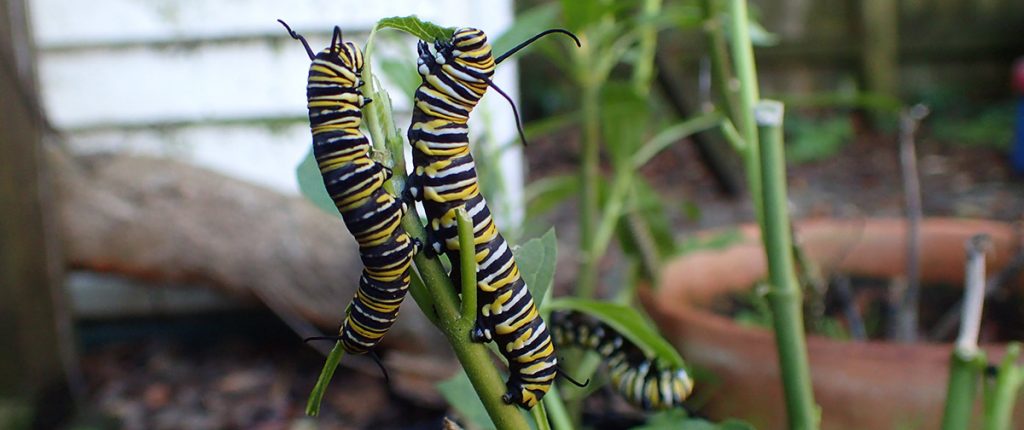
When they reach their final stage, their black stripes really begin to pop. There’s also their general shape- the front legs are distinctly smaller than the back legs. And they’re usually much longer, though some fifth instar caterpillars don’t get especially big. I’ve seen this happen on crowded plants, where some caterpillars out-compete others for food.
Monarch Caterpillar Chrysalides
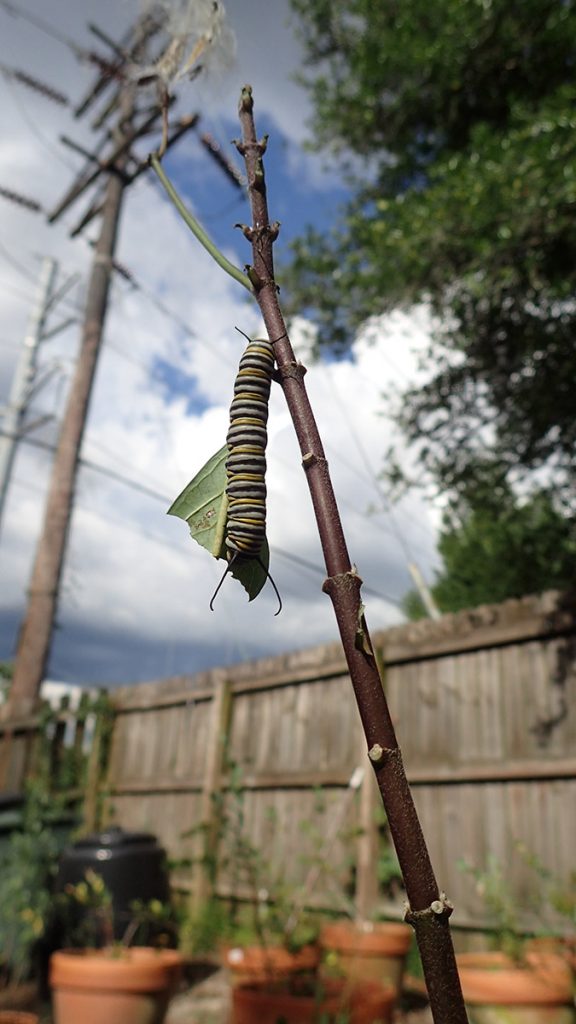
Like any caterpillar, monarchs get especially hungry in their last instar stage. Depending on the size of the plant and how many caterpillars it’s carrying, you may come out to leafless plants one morning. This is typically when caterpillars scoot off to find a place to make their J. Sometimes they gnaw on the top of the stalk for a little while. Many of our monarchs stay close by to make their final change, and I end up finding Js and chrysalides in every corner of the yard, often close to the host plants.
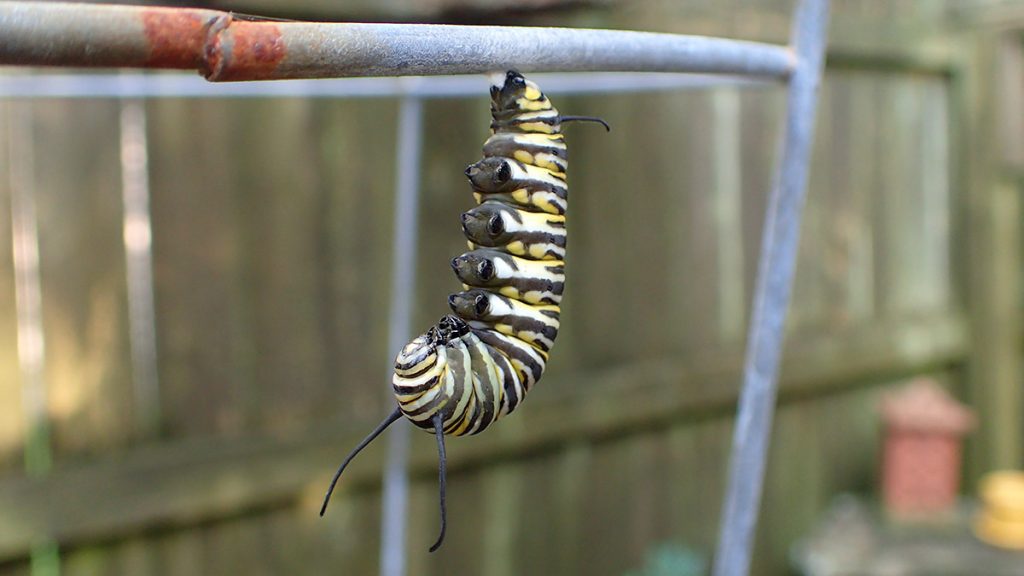
I find they usually spin chrysalides the morning after making their J. This ranges from just before sunrise to about 10-11 am, for the most part.
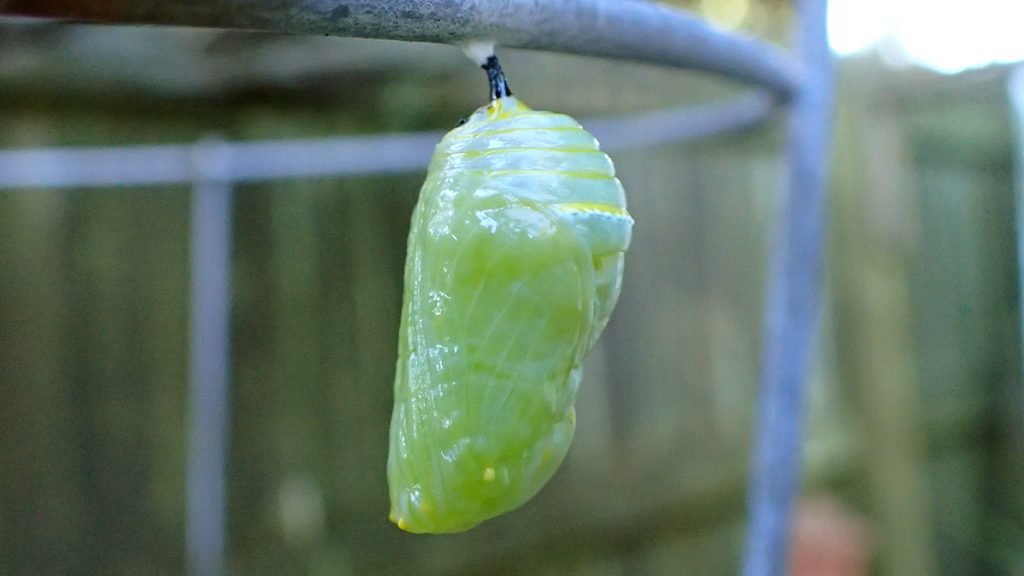
New monarch chrysalides are bumpy and shiny. Within a couple of hours, they’re smooth, with little gold bumps:
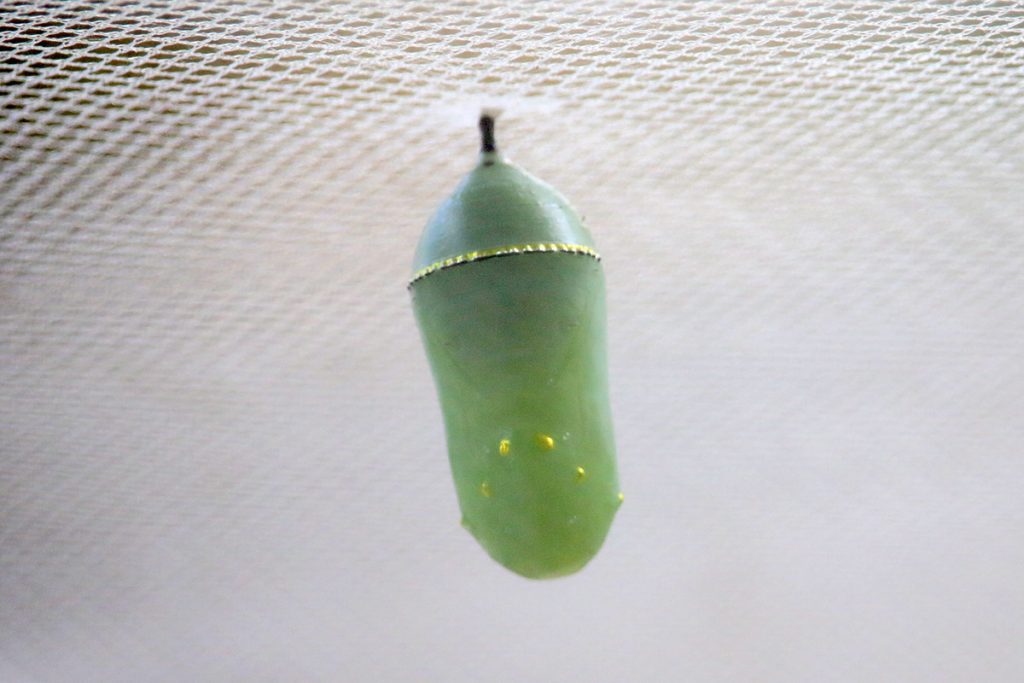
They’ll eclose within a week or two. If you keep an eye on them from day to day, you’ll eventually see this:
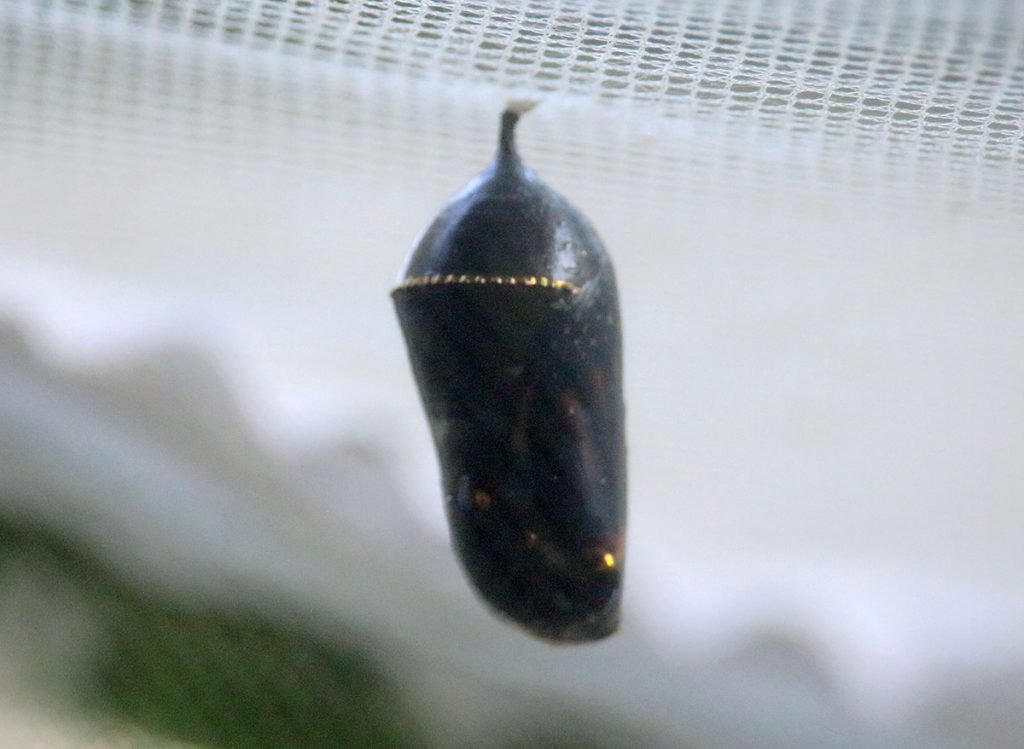
The chrysalis will go transparent and you’ll see the wing pattern through it.
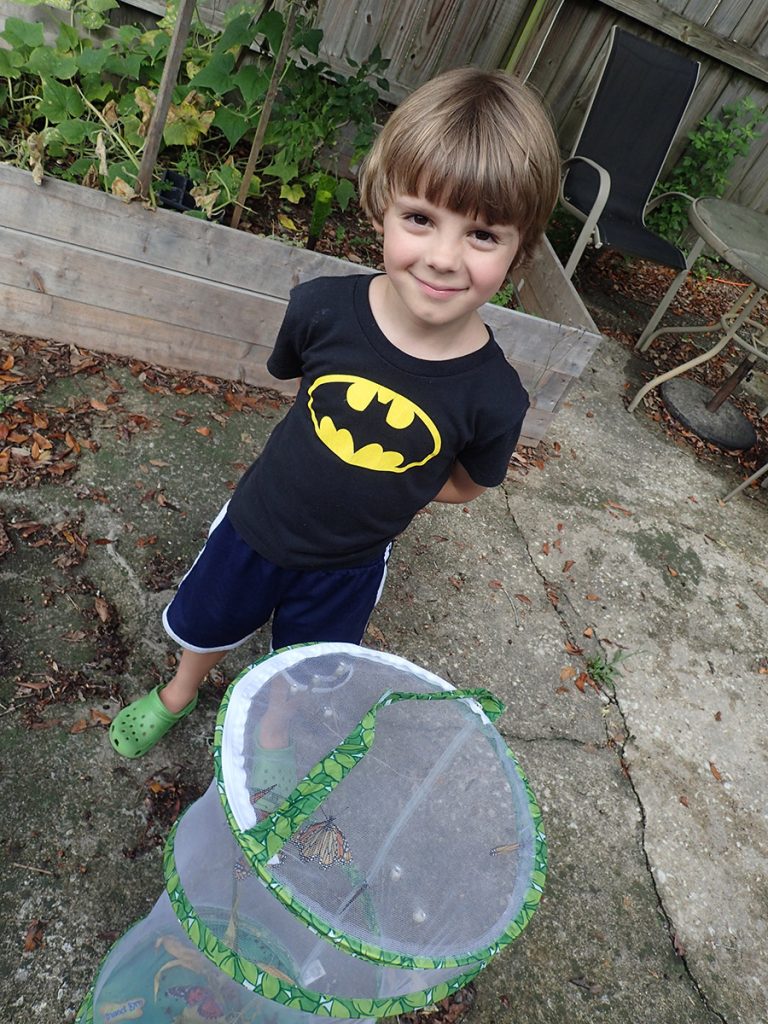
They typically eclose from their chrysalides in the morning. They’ll need time to dry their wings, and you may have to go to work or school. They’ll be okay in there if you need to wait until the afternoon to release them. I find that if you wait until after dark, they may be content to sit in the enclosure. If the butterfly is hesitant to leave, you can try walking it onto your finger as my son Max does in the video above.
Gulf Fritillary (Agraulis vanillae nigrior)
The title of this post promises four butterfly species, but here’s a fifth you might raise. Gulf fritillaries, as well as zebra longwings and variegated fritillaries, host on passionvine. I’ve never been able to convince my wife to buy this plant, and she has good reason to be resistant. It can take over. But if you have the space, passionflowers are attractive, and the leaves will feed multiple species of caterpillar.
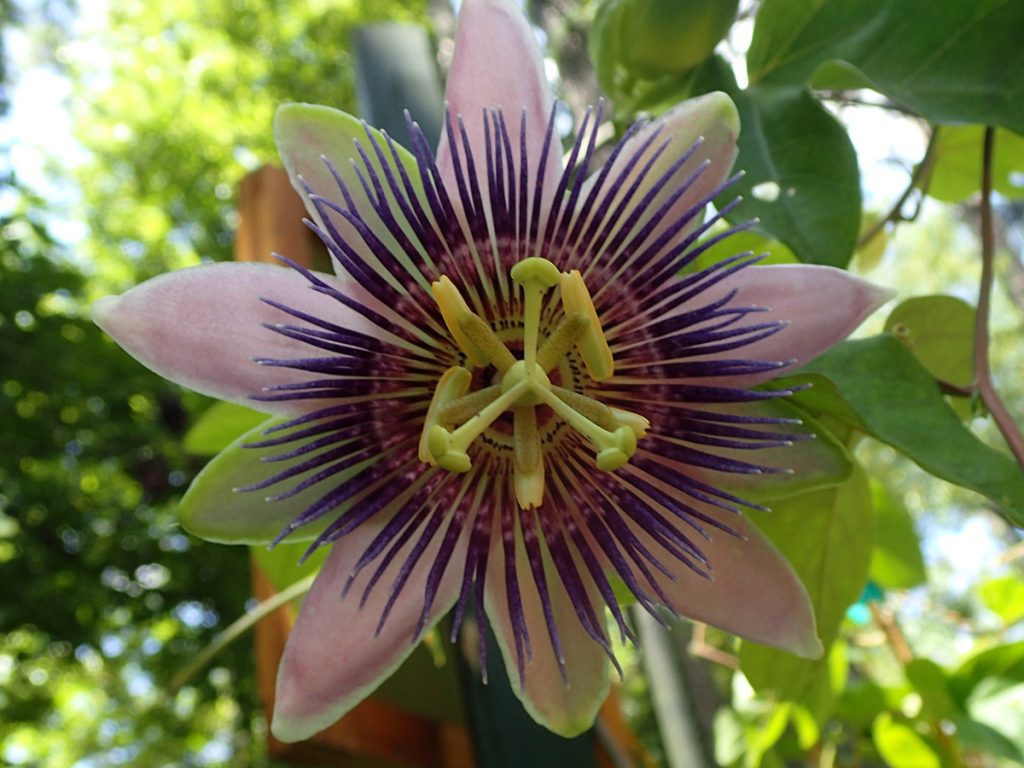
I went to Thomasville for the first annual Georgia Pollinator Census last summer. There, at the Cherokee Lake Pollinator Garden, we saw plenty of gulf fritillary caterpillars, chrysalides, and even egg-laying.
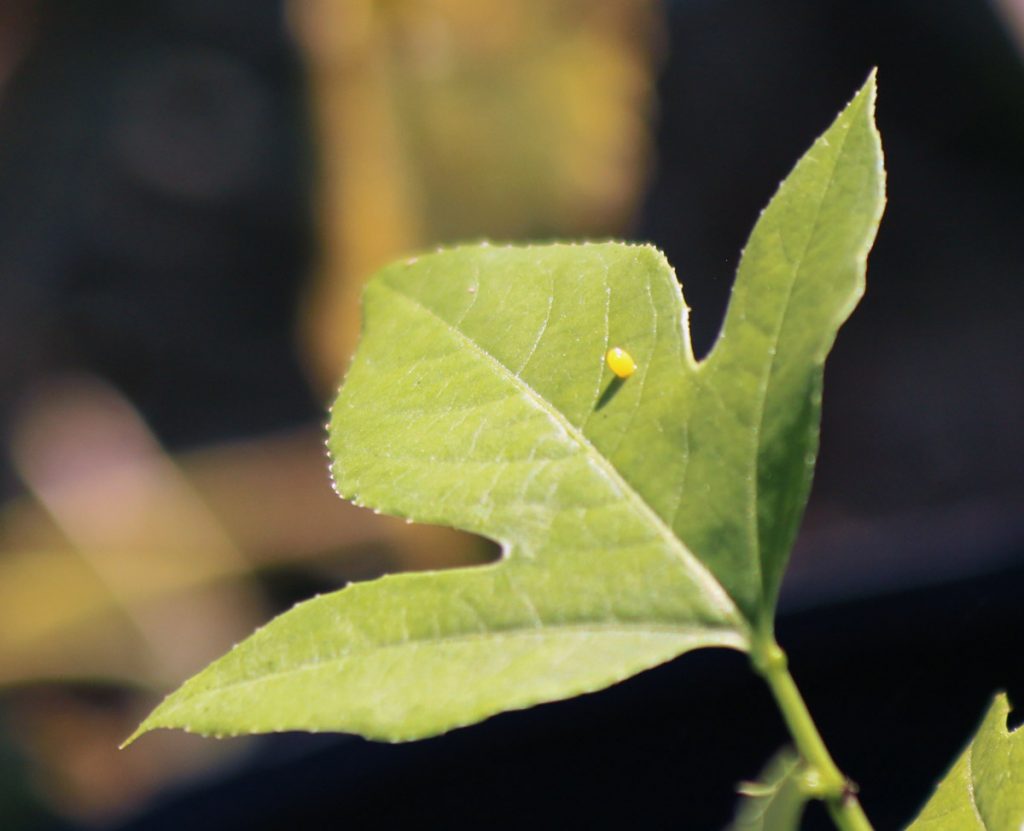
Some people train passionvine on trellises, but they can grow on other plants as well. At Cherokee Lake, they often grew on beautyberry bushes, which I’ve seen in other locations, such as Miccosukee Greenway in Tallahassee.
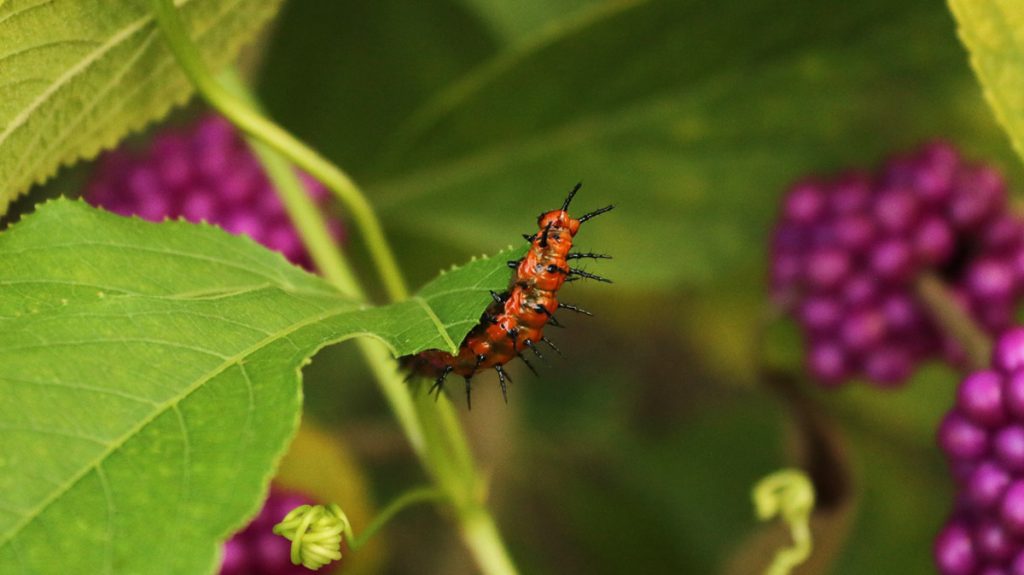
While we have never ventured to plant this vine in our yard, one of our neighbors must have. One night, while taking out the trash, I noticed this caterpillar on our house, in the J position.
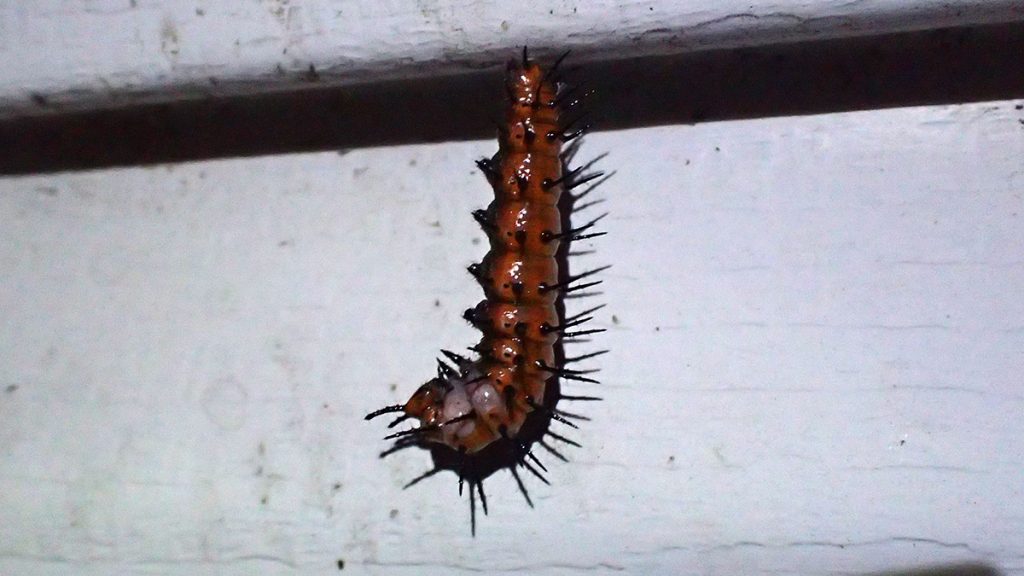
By the time I went out to water the plants, just before sunrise, this guy was a chrysalis.
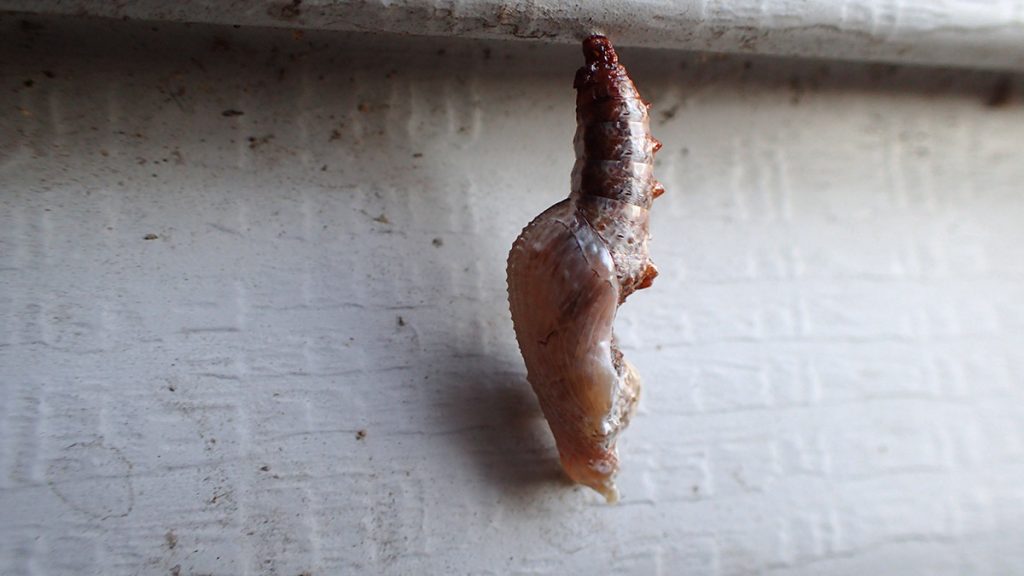
You can tell this one was fairly fresh. Soon, it developed a more papery texture:
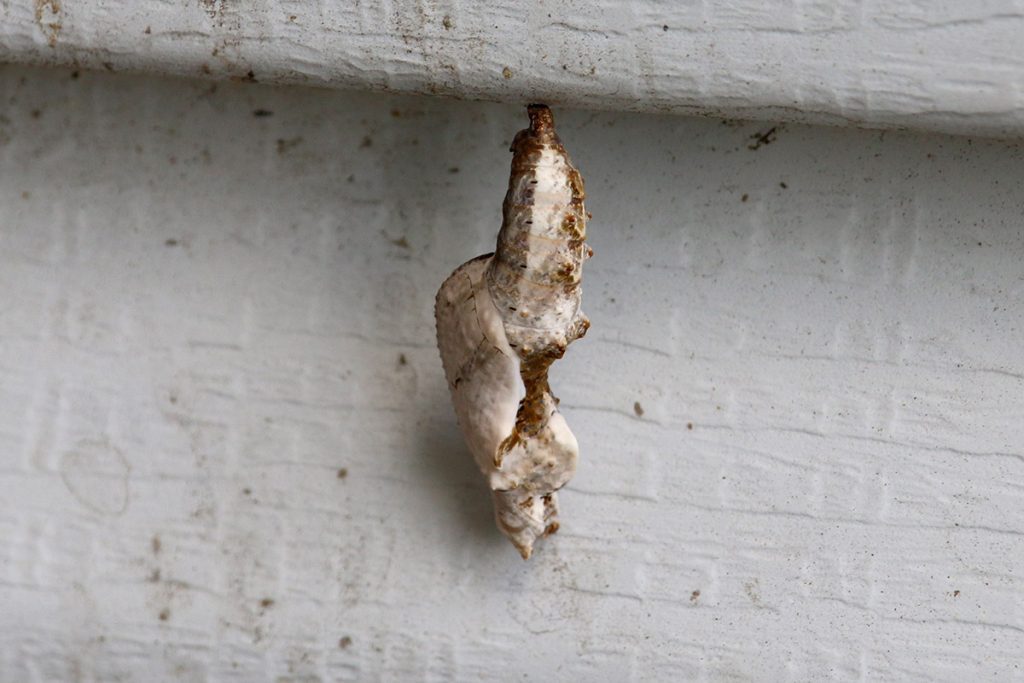
And then one day, it was gone:
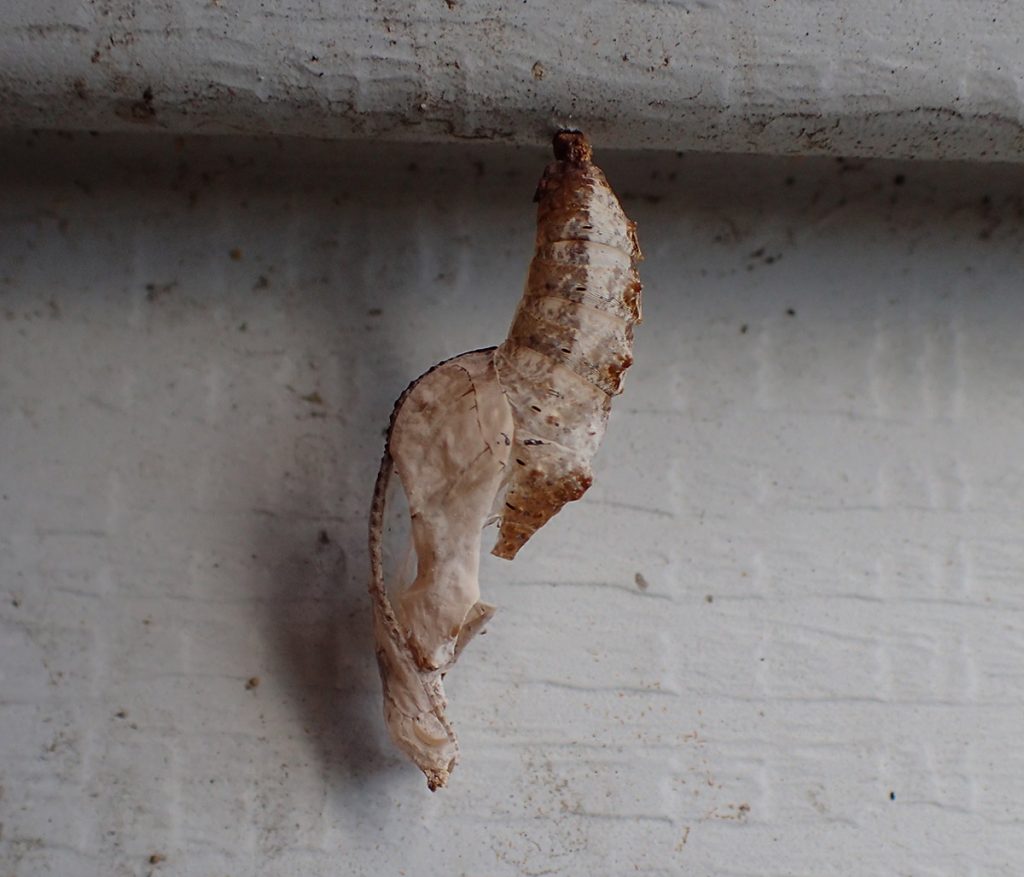
In a year where I didn’t see as many butterflies as I was used to in the yard, I would occasionally see a lone gulf fritillary. They’re especially fond of the lantana bed on the side of the yard.
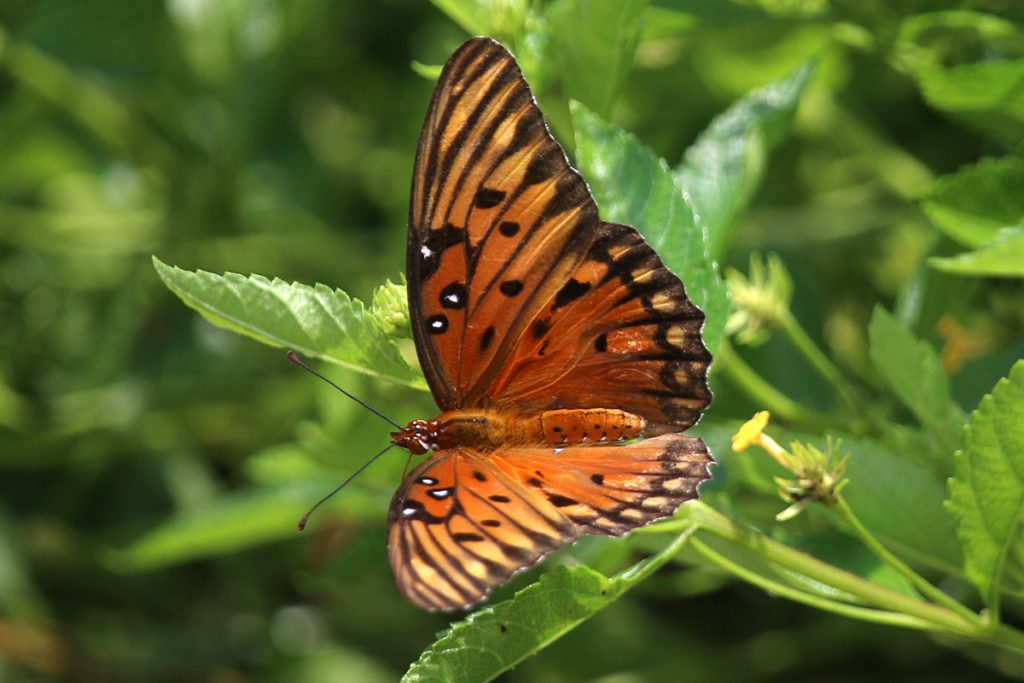
Raising Butterflies in an Enclosure
The more I pay attention to the caterpillars in my yard, the more I see how each plant functions as an ecosystem unto itself. Your host plant is a basal species. The caterpillars we love to raise are consumers, as are insects we consider pests, like aphids and milkweed beetles. Consumers feed the predators. I do try to manage predators around host plants. I tear down spider webs and relocate assassin bugs when I see them, and also remove the non-caterpillar consumers. Milkweed aphids, for instance, attract ladybugs and syrphid larvae. Ladybugs eat younger monarch caterpillars, and I suspect that syrphids might as well. I figure, the less reason for a predator to visit a plant, the better. Most of our plants are in pots. So if I notice that a certain spot in the yard has high mortality, I move pots there nearer to plants where caterpillars have been more successful. That typically works. But the most surefire way of protecting your caterpillars is to bring them inside an enclosure and separate them from the violence of your yard.
A few thoughts on raising caterpillars in an enclosure
Edit January 2024- Since I wrote this post in 2018, research has come out about captive-raised monarchs which likely applies to all butterflies. By bringing in caterpillars and sheltering them from predators and the elements, we keep them from participating in the process of natural selection. This may increase the survivorship of your caterpillars, but also likely allows them to pass on less successful genes that would otherwise be removed from the gene pool.
- Make sure they have enough to eat. You have limited space, so you aren’t going to have large plants here. I prefer to use small potted plants and to constantly rotate them in and out. You don’t want them going too long without food.
- If you use plant clippings, put them in water. You don’t want your leaves to wilt before they get eaten. And also, cover that water so that caterpillars don’t end up in it.
- Inspect the plants/ clippings before bringing them in. You don’t want to bring a spider or other predator in. You also want to check for eggs. Monarchs eat eggs on leaves. A younger caterpillar eats its own egg and so it does this when it sees that of another; a larger cat might just not notice it as it gets into its “eating machine” phase.
- Clean up their poop!
- Be careful to gauge the capacity of your enclosure. The first year we raised monarchs, we ended up with over twenty caterpillars in ours at one point. They get competitive for space on the plant, and some moved off to the side and stopped eating. One was kind of small when it made its chrysalis and didn’t survive long after hatching. Now, we limit the number we bring in and do our best to ensure the survival of the rest outside.
But what about moths?
Once you’re out in your yard paying attention to the little critters nibbling on your plants, you may notice that your home habitat supports a higher diversity of caterpillars than you thought. Moth caterpillars come in all sizes and can be quite colorful and strange-looking. But they can also be pests:
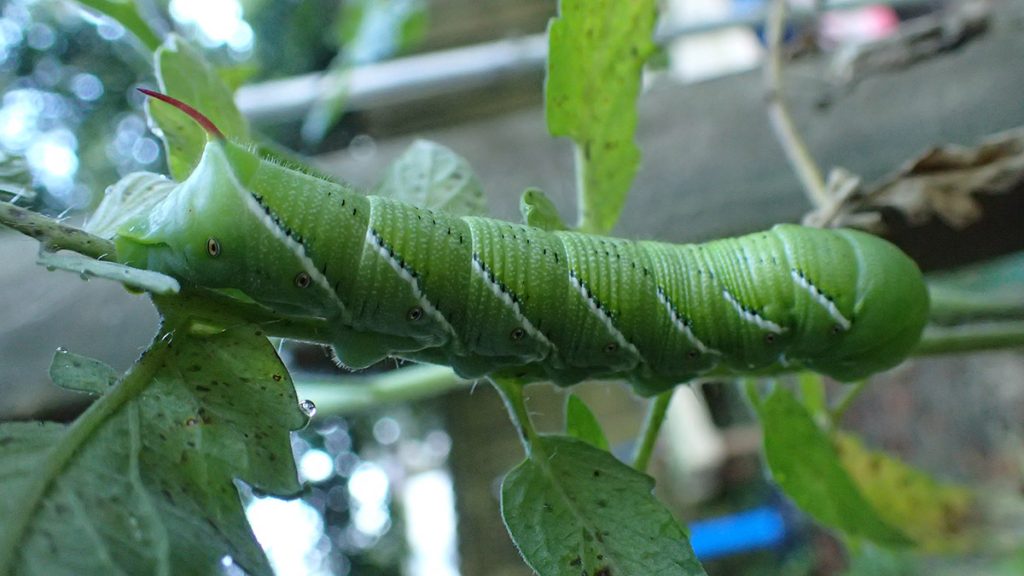
We call the tobacco hornworm a pest, but it does what a monarch does. An adult sphinx moth, which is what this caterpillar would become, would pollinate more plants in your yard than a monarch. But we invited the monarch into our yard by planting milkweed. The tomatoes were for us.
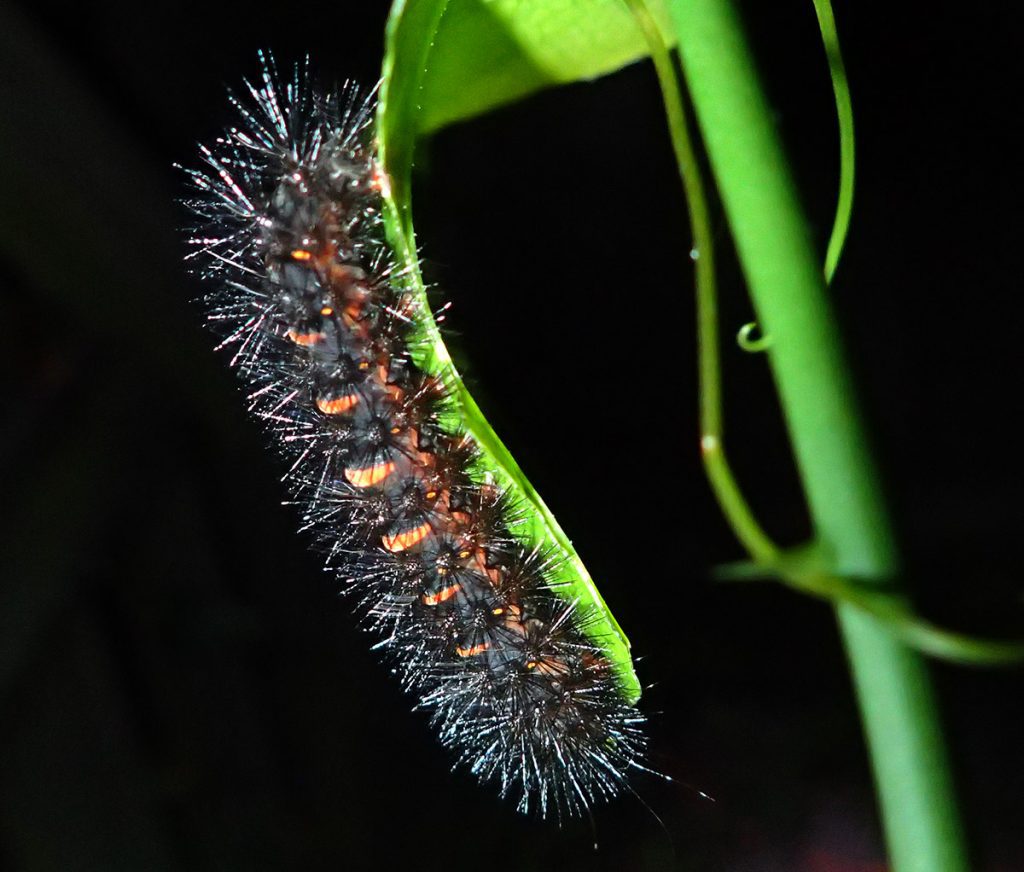
This leopard moth caterpillar is eating a smilax vine I had allowed to get too big. It’s all yours, buddy!
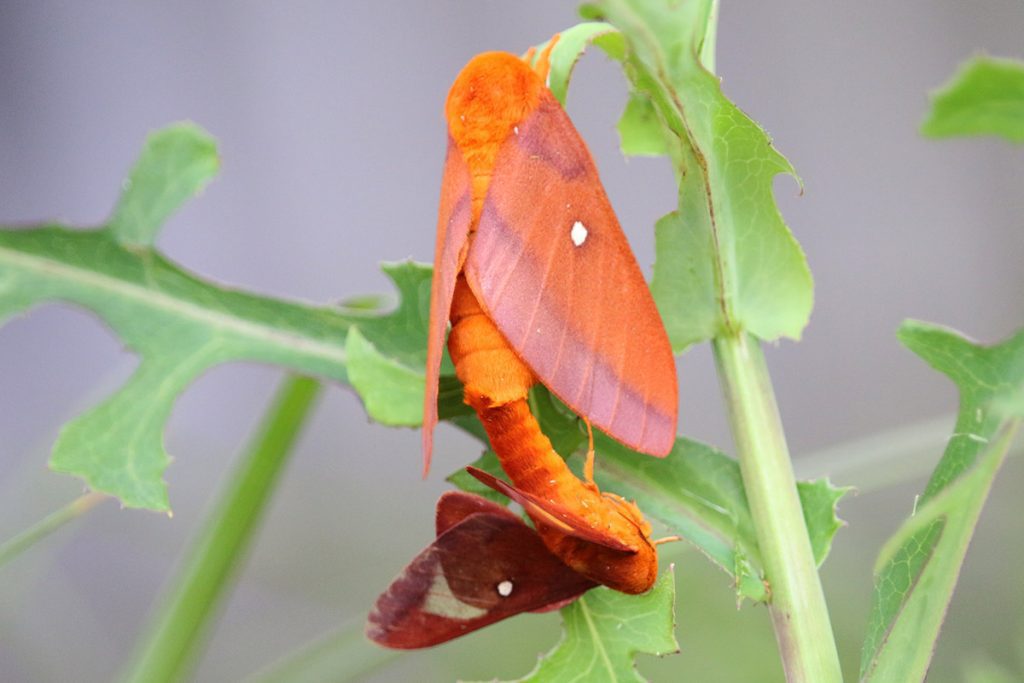
These two oakworm moths were mating under an oak tree in my yard. Mother moth likely laid the eggs higher up in the tree, so I never saw the caterpillars. It did get me thinking about just how much insect life that one tree supported. And searching the leaves for caterpillars, I saw a few different kinds of oak galls, which house larval gall wasps. Some of these look like wooden balls; others are pink and fuzzy:
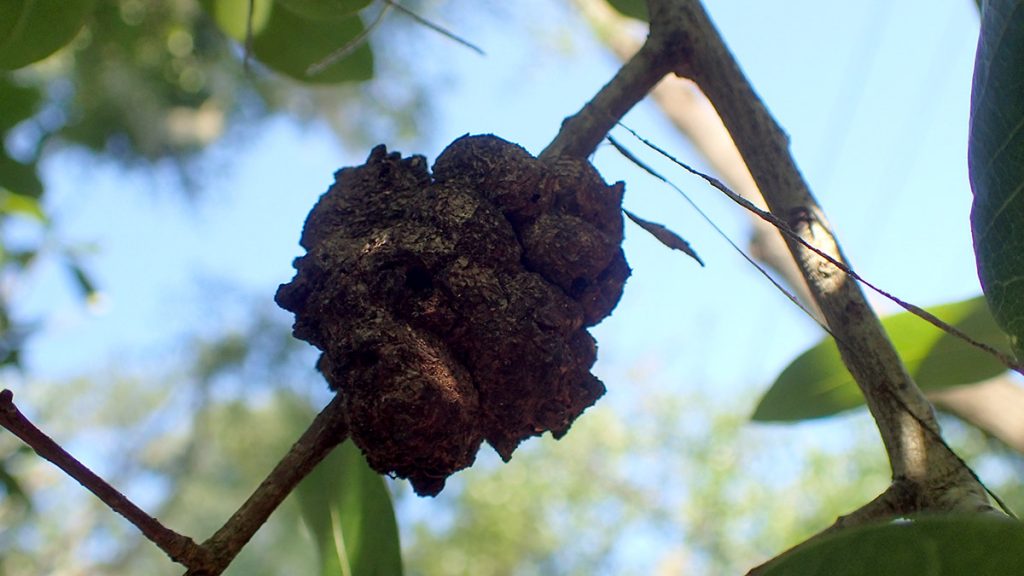
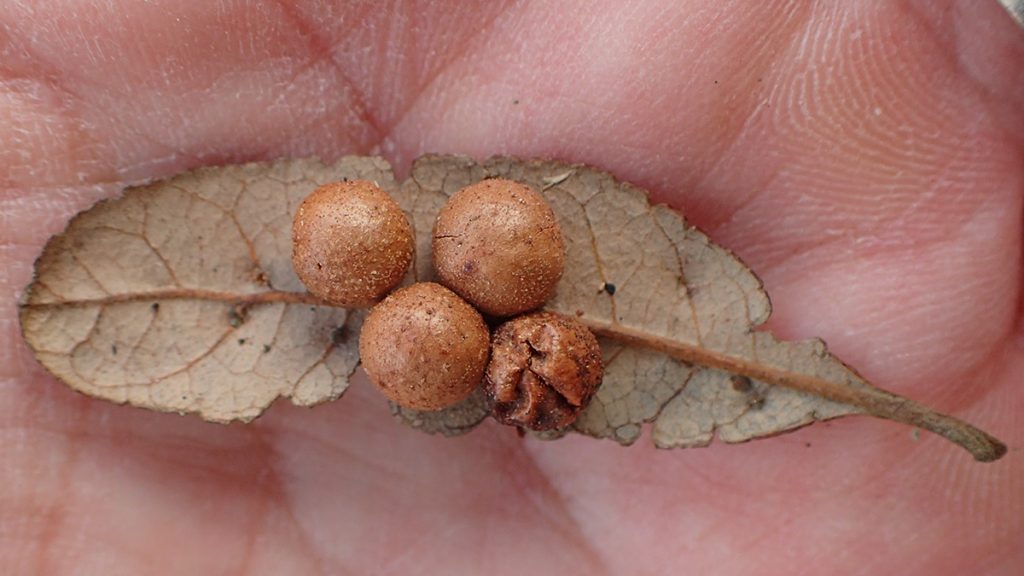
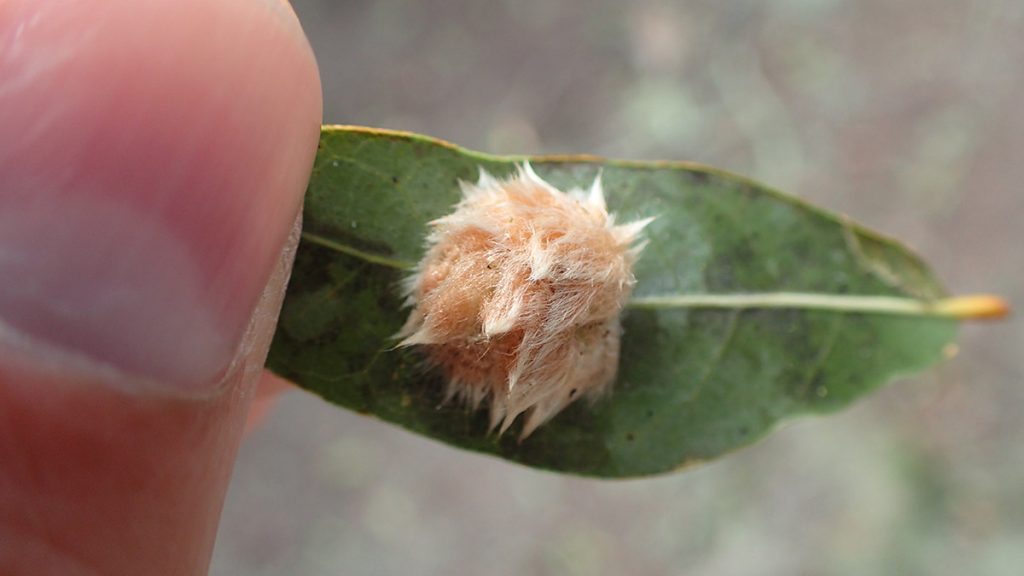
If you keep your eyes open while in the yard, you’ll see some cool stuff. And if you want to know more about the critters you see, you can try taking a photo with iNaturalist. I’ve been doing that in the garden, and iNaturalist is going to be a big part of the WFSU EcoCitizen Project. Between the autorecognition feature and the community looking over uploaded photos, you may get your answer without having to do a ton of research. I like using a combination of iNaturalist, Google, and Facebook groups dedicated to different types of plants or animals. Knowing what you have can help you determine whether you have a “pest” insect or an invasive species. Quite helpful. If you build a home ecosystem with native plants, cool critters will come. When you really start to look for them, a whole world opens up, right in your yard.
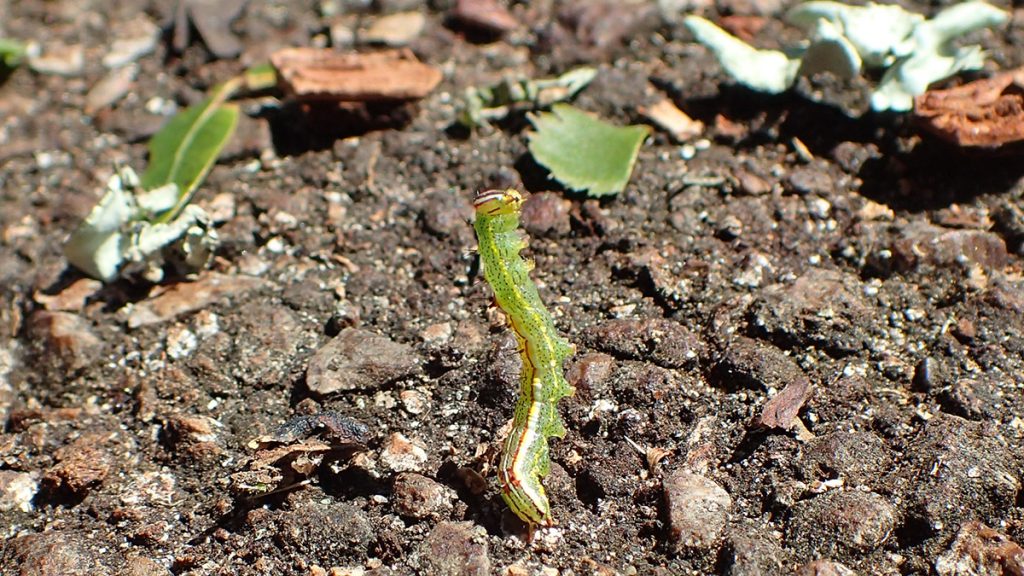
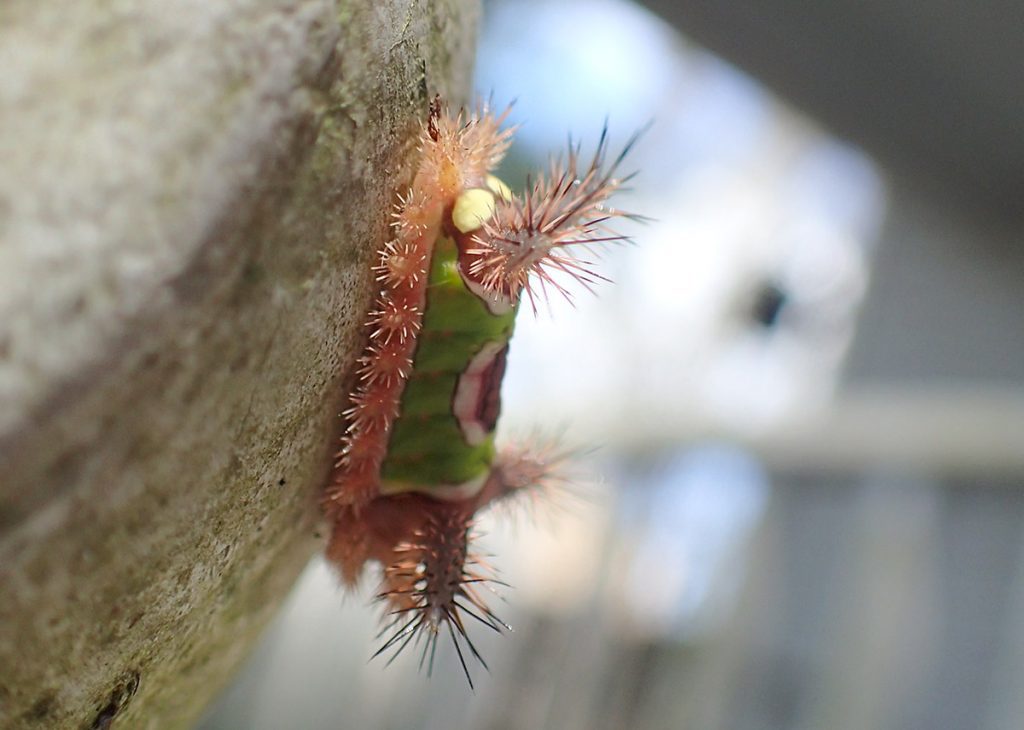
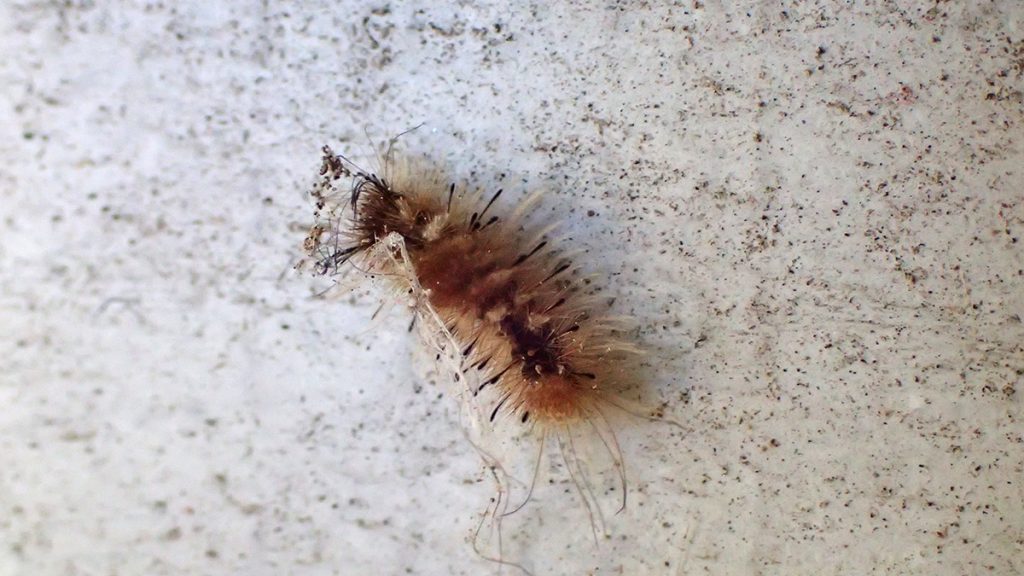
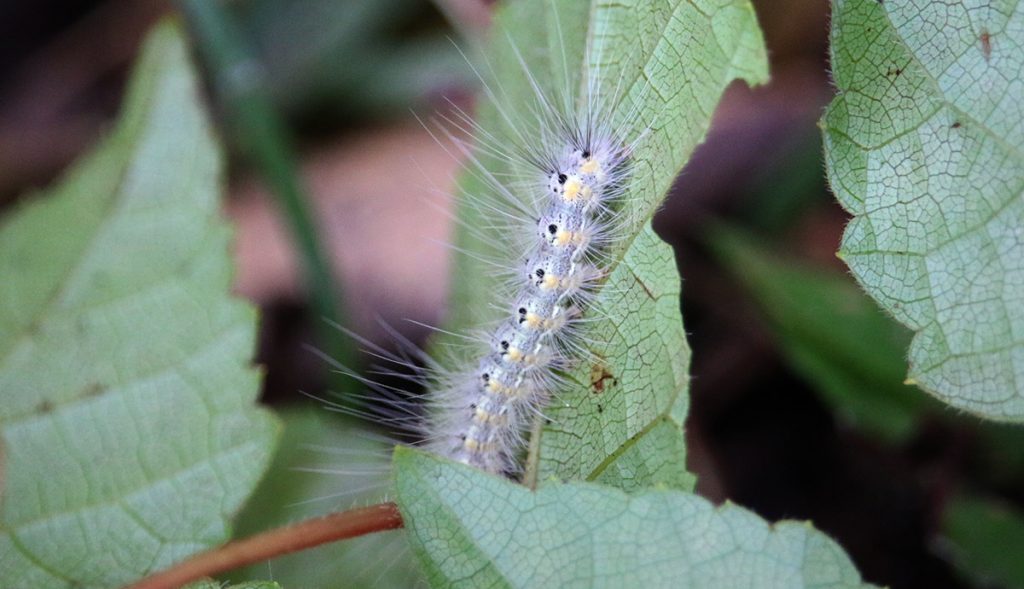
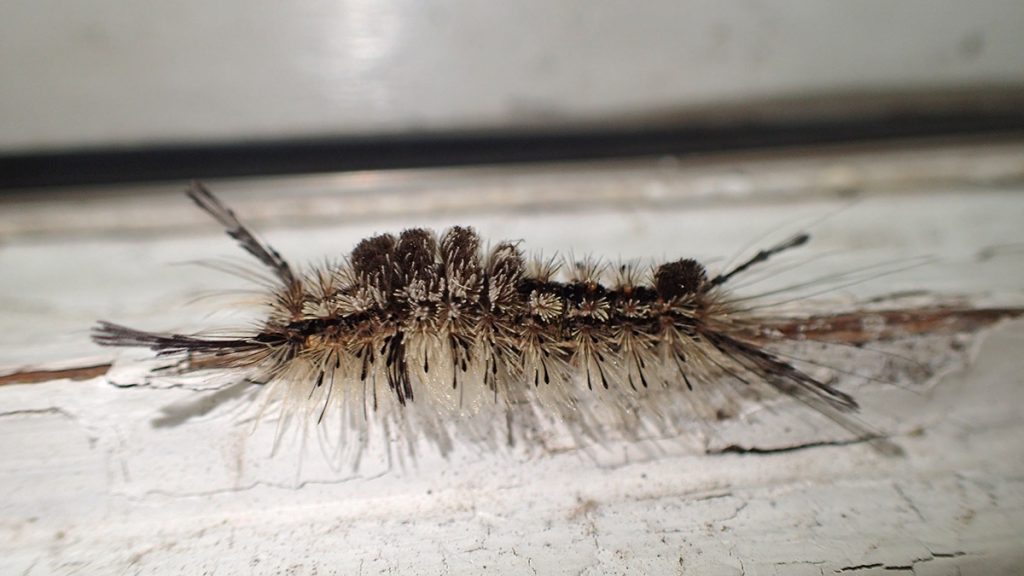
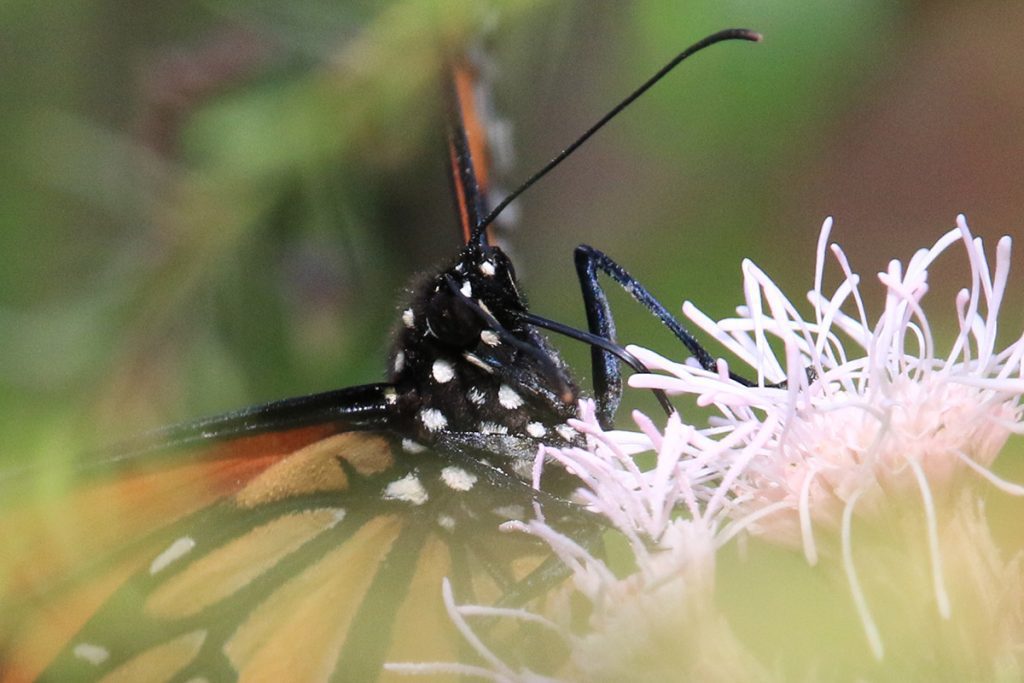
Dig Deeper into Backyard Ecology
What can we do to invite butterflies, birds, and other wildlife into our yards? And what about the flora and fauna that makes its way into our yards; the weeds, insects, and other critters that create the home ecosystem? WFSU Ecology Blog takes a closer look.
